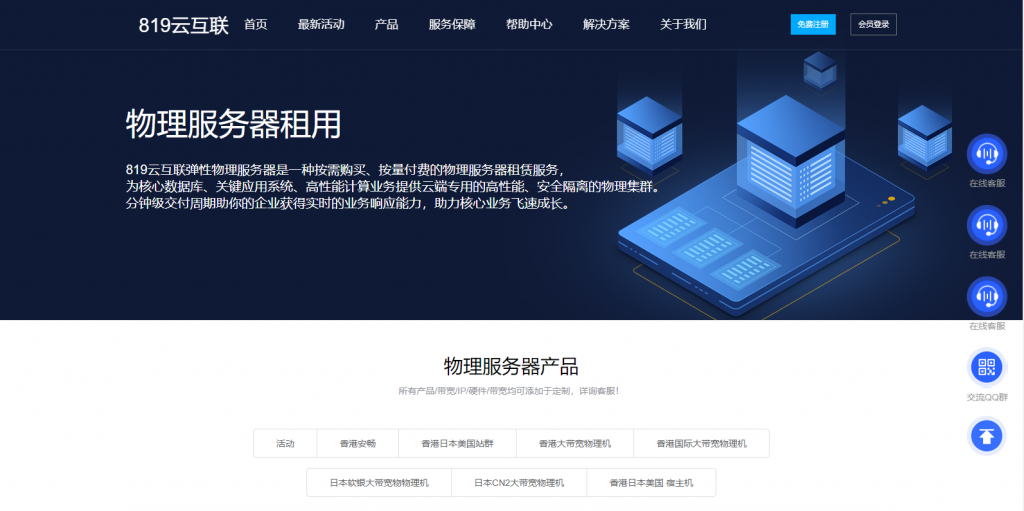电流www
www.qqq40.com 时间:2021-03-02 阅读:()
TPS54821www.
ti.
com.
cnZHCS485–OCTOBER2011支持断续模式的4.
5V至17V输入、8A同步降压SWIFT转换器查询样品:TPS548211特性23集成式26m/19mMOSFET提供分离电源轨:1.
6V至17V的PVIN针对SWIFT的软件工具相关文档,请访问http://www.
ti.
com/swift200kHz至1.
6MHz开关频率与外部时钟同步应用不同温度下基准电压为0.
6V±1%数字电视电源2uA的低关断静态电流机顶盒单调启动至预偏置输出蓝光DVD工作结点温度范围:-40°C至125°C家用终端可调慢启动/电源时序高性能负载点稳压设计针对欠压及过压的功率正常输出监控可调输入欠压闭锁说明采用耐热性能增强型3.
5毫米x3.
5毫米QFN封装的TPS54821是一款全功能17V、8A同步降压转换器.
凭借高效率和集成高侧/低侧MOSFET,此降压器为适应小型设计要求而进行了优化.
通过电流模式控制减少组件数量,并通过选择高开关频率缩小电感器占位面积,从而可进一步节省空间.
输出电压启动斜线上升由SS/TR引脚控制,其操作既支持独立电源供电模式又支持跟踪模式.
通过正确配置使能引脚与漏极开路电源状态正常引脚也可实现电源排序.
高侧FET的逐周期电流限制可在过载情况下保护器件不受损害,并可通过使用避免电流击穿的低侧源电流限制来增强此功能.
此外,还有一个可关闭低侧MOSFET的低侧吸收电流限制以防止过大的反向电流.
在过载电流情况持续时间超过预设时间时,断续保护功能将被触发.
当裸片温度超过热关断温度时,过热断续保护功能将禁用该器件,而在内置热关断断续时间之后,该部件会被重新启用.
空白简化的电路原理图EFFICIENCY,VOUT=3.
3V,FSW=480kHz1Pleasebeawarethatanimportantnoticeconcerningavailability,standardwarranty,anduseincriticalapplicationsofTexasInstrumentssemiconductorproductsanddisclaimerstheretoappearsattheendofthisdatasheet.
2SWIFT的软件工具isatrademarkofTexasInstruments.
3Allothertrademarksarethepropertyoftheirrespectiveowners.
PRODUCTIONDATAinformationiscurrentasofpublicationdate.
Copyright2011,TexasInstrumentsIncorporatedProductsconformtospecificationsperthetermsoftheTexasInstrumentsstandardwarranty.
ProductionprocessingdoesnotEnglishDataSheet:SLVSB14necessarilyincludetestingofallparameters.
TPS54821ZHCS485–OCTOBER2011www.
ti.
com.
cnThesedeviceshavelimitedbuilt-inESDprotection.
TheleadsshouldbeshortedtogetherorthedeviceplacedinconductivefoamduringstorageorhandlingtopreventelectrostaticdamagetotheMOSgates.
ORDERINGINFORMATION(1)TJPACKAGEPARTNUMBERSmallReel(2)TPS54821RHLT–40°Cto125°C14PinQFNLargeReel(2)TPS54821RHLR(1)Forthemostcurrentpackageandorderinginformation,seethePackageOptionAddendumattheendofthisdocument,orseetheTIwebsiteatwww.
ti.
com.
(2)Seetheapplicationsectionofthedatasheetforlayoutinformation.
ABSOLUTEMAXIMUMRATINGS(1)overoperatingtemperaturerange(unlessotherwisenoted)VALUEUNITMINMAXVIN–0.
320PVIN–0.
320EN–0.
36BOOT–0.
327InputVoltageVSENSE–0.
33VCOMP–0.
33PWRGD–0.
36SS/TR–0.
33RT/CLK–0.
36BOOT-PH07.
5OutputVoltagePH–120VPH10nsTransient–320Vdiff(GNDtoexposedthermalpad)–0.
20.
2VRT/CLK±100ASourceCurrentPHCurrentLimitAPHCurrentLimitAPVINCurrentLimitSinkCurrentCOMP±200APWRGD–0.
15mAElectrostaticDischarge(HBM)QSS009-105(JESD22-A114A)2kVElectrostaticDischarge(CDM)QSS009-147(JESD22-C101B.
01)500VOperatingJunctionTemperature–40125°CStorageTemperature–65150(1)Stressesbeyondthoselistedunderabsolutemaximumratingsmaycausepermanentdamagetothedevice.
Thesearestressratingsonly,andfunctionaloperationofthedeviceattheseoranyotherconditionsbeyondthoseindicatedunderrecommendedoperatingconditionsisnotimplied.
Exposuretoabsolute-maximum-ratedconditionsforextendedperiodsmayaffectdevicereliability.
2Copyright2011,TexasInstrumentsIncorporatedTPS54821www.
ti.
com.
cnZHCS485–OCTOBER2011THERMALINFORMATIONTPS54821THERMALMETRIC(1)(2)QFNUNITS14PINSθJAJunction-to-ambientthermalresistance47.
2θJAJunction-to-ambientthermalresistance(3)32θJCtopJunction-to-case(top)thermalresistance64.
8θJBJunction-to-boardthermalresistance14.
4°C/WψJTJunction-to-topcharacterizationparameter0.
5ψJBJunction-to-boardcharacterizationparameter14.
7θJCbotJunction-to-case(bottom)thermalresistance3.
2(1)Formoreinformationabouttraditionalandnewthermalmetrics,seetheICPackageThermalMetricsapplicationreport,SPRA953.
(2)PowerratingataspecificambienttemperatureTAshouldbedeterminedwithajunctiontemperatureof125°C.
Thisisthepointwheredistortionstartstosubstantiallyincrease.
ThermalmanagementofthePCBshouldstrivetokeepthejunctiontemperatureatorbelow125°Cforbestperformanceandlong-termreliability.
Seepowerdissipationestimateinapplicationsectionofthisdatasheetformoreinformation.
(3)Testboardconditions:(a)2.
5inches*2.
5inches,4layers,thickness:0.
062inch(b)2oz.
coppertraceslocatedonthetopofthePCB(c)2oz.
coppergroundplanesonthe2internallayersandbottomlayer(d)40.
010inchthermalviaslocatedunderthedevicepackageELECTRICALCHARACTERISTICSTJ=–40°Cto125°C,VIN=4.
5Vto17V,PVIN=1.
6Vto17V(unlessotherwisenoted)PARAMETERTESTCONDITIONSMINTYPMAXUNITSUPPLYVOLTAGE(VINANDPVINPINS)PVINoperatinginputvoltage1.
617VVINoperatinginputvoltage4.
517VVINinternalUVLOthresholdVINrising4.
04.
5VVINinternalUVLOhysteresis150mVVINshutdownsupplyCurrentEN=0V25μAVINoperating–nonswitchingsupplycurrentVSENSE=610mV600800μAENABLEANDUVLO(ENPIN)EnablethresholdRising1.
211.
26VEnablethresholdFalling1.
101.
17InputcurrentEN=1.
1V1.
15μAHysteresiscurrentEN=1.
3V3.
3μAVOLTAGEREFERENCEVoltagereference0A≤IOUT≤8A0.
5940.
60.
606VMOSFETHigh-sideswitchresistanceBOOT-PH=3V3260mHigh-sideswitchresistance(1)BOOT-PH=6V2640mLow-sideSwitchResistance(1)VIN=12V1930mERRORAMPLIFIERErroramplifierTransconductance(gm)–2μACOMPCOMP)=1V1300μMhosErroramplifierdcgainVSENSE=0.
6V10004000V/VV(COMP)=1V,100mVinputErroramplifiersource/sink±110μAoverdriveStartswitchingthreshold0.
25VCOMPtoIswitchgm21A/VCURRENTLIMIT(1)MeasuredatpinsCopyright2011,TexasInstrumentsIncorporated3TPS54821ZHCS485–OCTOBER2011www.
ti.
com.
cnELECTRICALCHARACTERISTICS(continued)TJ=–40°Cto125°C,VIN=4.
5Vto17V,PVIN=1.
6Vto17V(unlessotherwisenoted)PARAMETERTESTCONDITIONSMINTYPMAXUNITHigh-sideswitchcurrentlimitthreshold10.
514.
517ALow-sideswitchsourcingcurrentlimit9.
511.
515ALow-sideswitchsinkingcurrentlimit234AHiccupwaittime512CyclesHiccuptimebeforere-start16384CyclesTHERMALSHUTDOWNThermalshutdown160175°CThermalshutdownhysteresis10°CThermalshutdownhiccuptime16384CyclesTIMINGRESISTORANDEXTERNALCLOCK(RT/CLKPIN)MinimumswitchingfrequencyRrt=240k(1%)160200240kHzSwitchingfrequencyRrt=100k(1%)400480560kHzMaximumswitchingfrequencyRrt=29k(1%)144016001760kHzMinimumpulsewidth20nsRT/CLKhighthreshold2VRT/CLKlowthreshold0.
78VMeasureat500kHzwithRTresistorRT/CLKfallingedgetoPHrisingedgedelay66nsinseriesSwitchingfrequencyrange(RTmodesetpoint2001600kHzandPLLmode)PH(PHPIN)Measuredat90%to90%ofVIN,Minimumontime94145ns25°C,IPH=2AMinimumofftimeBOOT-PH≥3V0nsBOOT(BOOTPIN)BOOT-PHUVLO2.
13VSLOWSTARTANDTRACKING(SS/TRPIN)SSchargecurrent2.
3μASS/TRtoVSENSEmatchingV(SS/TR)=0.
4V2060mVPOWERGOOD(PWRGDPIN)VSENSEthresholdVSENSEfalling(Fault)92%VrefVSENSErising(Good)94%VrefVSENSErising(Fault)106%VrefVSENSEfalling(Good)104%VrefOutputhighleakageVSENSE=Vref,V(PWRGD)=5.
5V30100nAOutputlowI(PWRGD)=2mA0.
3VMinimumVINforvalidoutputV(PWRGD)www.
ti.
com.
cnZHCS485–OCTOBER2011DEVICEINFORMATIONPINASSIGNMENTSRHLPACKAGE(TOPVIEW)PINFUNCTIONSPINDESCRIPTIONNAMENO.
RT/CLK1AutomaticallyselectsbetweenRTmodeandCLKmode.
Anexternaltimingresistoradjuststheswitchingfrequencyofthedevice;InCLKmode,thedevicesynchronizestoanexternalclock.
GND2,3Returnforcontrolcircuitryandlow-sidepowerMOSFET.
PVIN4,5Powerinput.
Suppliesthepowerswitchesofthepowerconverter.
VIN6Suppliesthecontrolcircuitryofthepowerconverter.
VSENSE7Invertinginputofthegmerroramplifier.
COMP8Erroramplifieroutput,andinputtotheoutputswitchcurrentcomparator.
Connectfrequencycompensationtothispin.
SS/TR9Slow-startandtracking.
Anexternalcapacitorconnectedtothispinsetstheinternalvoltagereferencerisetime.
Thevoltageonthispinoverridestheinternalreference.
Itcanbeusedfortrackingandsequencing.
EN10Enablepin.
Floattoenable.
Adjusttheinputundervoltagelockoutwithtworesistors.
PH11,12Theswitchnode.
BOOT13AbootstrapcapisrequiredbetweenBOOTandPH.
Thevoltageonthiscapcarriesthegatedrivevoltageforthehigh-sideMOSFET.
PWRGD14PowerGoodfaultpin.
Assertslowifoutputvoltageislowduetothermalshutdown,dropout,over-voltage,ENshutdownorduringslowstart.
Exposed15Thermalpadofthepackageandsignalgroundanditmustbesoldereddownforproperoperation.
ThermalPADCopyright2011,TexasInstrumentsIncorporated5TPS54821ZHCS485–OCTOBER2011www.
ti.
com.
cnFUNCTIONALBLOCKDIAGRAM6Copyright2011,TexasInstrumentsIncorporatedTPS54821www.
ti.
com.
cnZHCS485–OCTOBER2011TYPICALCHARACTERISTICSCHARACTERISTICCURVESHIGH-SIDEMOSFETONRESISTANCEvsJUNCTIONLOW-SIDEMOSFETONRESISTANCEvsJUNCTIONTEMPERATURETEMPERATUREFigure1.
Figure2.
VOLTAGEREFERENCEvsJUNCTIONTEMPERATUREOSCILLATORFREQUENCYvsJUNCTIONTEMPERATUREFigure3.
Figure4.
Copyright2011,TexasInstrumentsIncorporated7TPS54821ZHCS485–OCTOBER2011www.
ti.
com.
cnTYPICALCHARACTERISTICS(continued)ENPINUVLOTHRESHOLDvsENPINHYSTERESISCURRENTvsJUNCTIONJUNCTIONTEMPERATURETEMPERATUREFigure5.
Figure6.
ENPINPULLUPCURRENTvsJUNCTIONTEMPERATURESHUTDOWNQUIESCENTCURRENTvsINPUTVOLTAGEFigure7.
Figure8.
VINNON-SWITCHINGOPERATINGQUIESCENTCURRENTvsSLOWSTARTCHARGECURRENTvsINPUTVOLTAGEJUNCTIONTEMPERATUREFigure9.
Figure10.
8Copyright2011,TexasInstrumentsIncorporatedTPS54821www.
ti.
com.
cnZHCS485–OCTOBER2011TYPICALCHARACTERISTICS(continued)SS/TRTOVSENSEOFFSETvsJUNCTIONTEMPERATUREPWRGDTHRESHOLDvsJUNCTIONTEMPERATUREFigure11.
Figure12.
HIGH-SIDECURRENTLIMITTHRESHOLDvsMINIMUMCONTROLLABLEONTIMEvsINPUTVOLTAGEJUNCTIONTEMPERATUREFigure13.
Figure14.
MINIMUMCONTROLLABLEDUTYRATIOvsBOOT-PHUVLOTHRESHOLDvsJUNCTIONJUNCTIONTEMPERATURETEMPERATUREFigure15.
Figure16.
Copyright2011,TexasInstrumentsIncorporated9TPS54821ZHCS485–OCTOBER2011www.
ti.
com.
cnTYPICALCHARACTERISTICS(continued)OVERVIEWThedeviceisa17-V,8-A,synchronousstep-down(buck)converterwithtwointegratedn-channelMOSFETs.
Toimproveperformanceduringlineandloadtransientsthedeviceimplementsaconstantfrequency,peakcurrentmodecontrolwhichalsosimplifiesexternalfrequencycompensation.
Thewideswitchingfrequencyof200kHzto1600kHzallowsforefficiencyandsizeoptimizationwhenselectingtheoutputfiltercomponents.
TheswitchingfrequencyisadjustedusingaresistortogroundontheRT/CLKpin.
Thedevicealsohasaninternalphaselockloop(PLL)controlledbytheRT/CLKpinthatcanbeusedtosynchronizetheswitchingcycletothefallingedgeofanexternalsystemclock.
Thedevicehasbeendesignedforsafemonotonicstartupintopre-biasedloads.
ThedefaultstartupiswhenVINistypically4.
0V.
TheENpinhasaninternalpull-upcurrentsourcethatcanbeusedtoadjusttheinputvoltageundervoltagelockout(UVLO)withtwoexternalresistors.
Inaddition,theENpincanbefloatingforthedevicetooperatewiththeinternalpull-upcurrent.
Thetotaloperatingcurrentforthedeviceisapproximately600μAwhennotswitchingandundernoload.
Whenthedeviceisdisabled,thesupplycurrentistypicallylessthan2μA.
TheintegratedMOSFETsallowforhighefficiencypowersupplydesignswithcontinuousoutputcurrentsupto8amperes.
TheMOSFETshavebeensizedtooptimizeefficiencyforlowerdutycycleapplications.
Thedevicereducestheexternalcomponentcountbyintegratingthebootrechargecircuit.
Thebiasvoltagefortheintegratedhigh-sideMOSFETissuppliedbyacapacitorbetweentheBOOTandPHpins.
ThebootcapacitorvoltageismonitoredbyaBOOTtoPHUVLO(BOOT-PHUVLO)circuitallowingPHpintobepulledlowtorechargethebootcapacitor.
Thedevicecanoperateat100%dutycycleaslongasthebootcapacitorvoltageishigherthanthepresetBOOT-PHUVLOthresholdwhichistypically2.
1V.
Theoutputvoltagecanbesteppeddowntoaslowasthe0.
6Vvoltagereference(Vref).
Thedevicehasapowergoodcomparator(PWRGD)withhysteresiswhichmonitorstheoutputvoltagethroughtheVSENSEpin.
ThePWRGDpinisanopendrainMOSFETwhichispulledlowwhentheVSENSEpinvoltageislessthan92%orgreaterthan106%ofthereferencevoltageVrefandassertshighwhentheVSENSEpinvoltageis94%to104%oftheVref.
TheSS/TR(slowstart/tracking)pinisusedtominimizeinrushcurrentsorprovidepowersupplysequencingduringpowerup.
Asmallvaluecapacitororresistordividershouldbecoupledtothepinforslowstartorcriticalpowersupplysequencingrequirements.
Thedeviceisprotectedfromoutputovervoltage,overloadandthermalfaultconditions.
Thedeviceminimizesexcessiveoutputovervoltagetransientsbytakingadvantageoftheovervoltagecircuitpowergoodcomparator.
Whentheovervoltagecomparatorisactivated,thehigh-sideMOSFETisturnedoffandpreventedfromturningonuntiltheVSENSEpinvoltageislowerthan104%oftheVref.
Thedeviceimplementsbothhigh-sideMOSFEToverloadprotectionandbidirectionallow-sideMOSFEToverloadprotectionswhichhelpcontroltheinductorcurrentandavoidcurrentrunaway.
Thedevicealsoshutsdownifthejunctiontemperatureishigherthanthermalshutdowntrippoint.
Thedeviceisrestartedundercontroloftheslowstartcircuitautomaticallyafterthebuilt-inthermalshutdownhiccuptime.
DETAILEDDESCRIPTIONFixedFrequencyPWMControlThedeviceusesaadjustablefixedfrequency,peakcurrentmodecontrol.
TheoutputvoltageiscomparedthroughexternalresistorsontheVSENSEpintoaninternalvoltagereferencebyanerroramplifierwhichdrivestheCOMPpin.
Aninternaloscillatorinitiatestheturnonofthehigh-sidepowerswitch.
Theerroramplifieroutputisconvertedintoacurrentreferencewhichcomparestothehigh-sidepowerswitchcurrent.
WhenthepowerswitchcurrentreachescurrentreferencegeneratedbytheCOMPvoltagelevelthehigh-sidepowerswitchisturnedoffandthelow-sidepowerswitchisturnedon.
ContinuousCurrentModeOperation(CCM)Asasynchronousbuckconverter,thedevicenormallyworksinCCM(ContinuousConductionMode)underallloadconditions.
10Copyright2011,TexasInstrumentsIncorporatedTPS54821www.
ti.
com.
cnZHCS485–OCTOBER2011VINandPowerVINPins(VINandPVIN)ThedeviceallowsforavarietyofapplicationsbyusingtheVINandPVINpinstogetherorseparately.
TheVINpinvoltagesuppliestheinternalcontrolcircuitsofthedevice.
ThePVINpinvoltageprovidestheinputvoltagetothepowerconvertersystem.
Iftiedtogether,theinputvoltageforVINandPVINcanrangefrom4.
5Vto17V.
IfusingtheVINseparatelyfromPVIN,theVINpinmustbebetween4.
5Vand17V,andthePVINpincanrangefromaslowas1.
6Vto17V.
AvoltagedividerconnectedtotheENpincanadjusttheeitherinputvoltageUVLOappropriately.
AdjustingtheinputvoltageUVLOonthePVINpinhelpstoprovideconsistentpowerupbehavior.
VoltageReferenceThevoltagereferencesystemproducesaprecise±1%voltagereferenceovertemperaturebyscalingtheoutputofatemperaturestablebandgapcircuit.
AdjustingtheOutputVoltageTheoutputvoltageissetwitharesistordividerfromtheoutput(VOUT)totheVSENSEpin.
Itisrecommendedtouse1%toleranceorbetterdividerresistors.
ReferringtotheapplicationschematicofFigure29,startwitha10kΩforR6anduseEquation1tocalculateR5.
Toimproveefficiencyatlightloadsconsiderusinglargervalueresistors.
IfthevaluesaretoohightheregulatorismoresusceptibletonoiseandvoltageerrorsfromtheVSENSEinputcurrentarenoticeable.
(1)WhereVref=0.
6VTheminimumoutputvoltageandmaximumoutputvoltagecanbelimitedbytheminimumontimeofthehigh-sideMOSFETandbootstrapvoltage(BOOT-PHvoltage)respectively.
MorediscussionsarelocatedinMinimumOutputVoltageandBootstrapVoltage(BOOT)andLowDropoutOperation.
SafeStart-upintoPre-BiasedOutputsThedevicehasbeendesignedtopreventthelow-sideMOSFETfromdischargingapre-biasedoutput.
Duringmonotonicpre-biasedstartup,thelow-sideMOSFETisnotallowedtosinkcurrentuntiltheSS/TRpinvoltageishigherthan1.
4V.
ErrorAmplifierThedeviceusesatransconductanceerroramplifier.
TheerroramplifiercomparestheVSENSEpinvoltagetotheloweroftheSS/TRpinvoltageortheinternal0.
6Vvoltagereference.
Thetransconductanceoftheerroramplifieris1300μA/Vduringnormaloperation.
ThefrequencycompensationnetworkisconnectedbetweentheCOMPpinandground.
SlopeCompensationThedeviceaddsacompensatingramptotheswitchcurrentsignal.
Thisslopecompensationpreventssub-harmonicoscillations.
Theavailablepeakinductorcurrentremainsconstantoverthefulldutycyclerange.
EnableandAdjustingUndervoltageLockoutTheENpinprovideselectricalon/offcontrolofthedevice.
OncetheENpinvoltageexceedsthethresholdvoltage,thedevicestartsoperation.
IftheENpinvoltageispulledbelowthethresholdvoltage,theregulatorstopsswitchingandenterslowIqstate.
TheENpinhasaninternalpull-upcurrentsource,allowingtheusertofloattheENpinforenablingthedevice.
IfanapplicationrequirescontrollingtheENpin,useopendrainoropencollectoroutputlogictointerfacewiththepin.
ThedeviceimplementsinternalUVLOcircuitryontheVINpin.
ThedeviceisdisabledwhentheVINpinvoltagefallsbelowtheinternalVINUVLOthreshold.
TheinternalVINUVLOthresholdhasahysteresisof150mV.
Copyright2011,TexasInstrumentsIncorporated11TPS54821ZHCS485–OCTOBER2011www.
ti.
com.
cnIfanapplicationrequireseitherahigherUVLOthresholdontheVINpinorasecondaryUVLOonthePVIN,insplitrailapplications,thentheENpincanbeconfiguredasshowninFigure17,Figure18andFigure19.
WhenusingtheexternalUVLOfunctionitisrecommendedtosetthehysteresistobegreaterthan500mV.
TheENpinhasasmallpull-upcurrentIpwhichsetsthedefaultstateofthepintoenablewhennoexternalcomponentsareconnected.
Thepull-upcurrentisalsousedtocontrolthevoltagehysteresisfortheUVLOfunctionsinceitincreasesbyIhoncetheENpincrossestheenablethreshold.
TheUVLOthresholdscanbecalculatedusingEquation2andEquation3.
Figure17.
AdjustableVINUndervoltageLockOutFigure18.
AdjustablePVINUndervoltageLockOut,VIN≥4.
5VFigure19.
AdjustableVINandPVINUndervoltageLockOut(2)(3)12Copyright2011,TexasInstrumentsIncorporatedTPS54821www.
ti.
com.
cnZHCS485–OCTOBER2011WhereIh=3.
3μA,Ip=1.
15μA,VENRISING=1.
21V,VENFALLING=1.
17VAdjustableSwitchingFrequencyandSynchronization(RT/CLK)TheRT/CLKpincanbeusedtosettheswitchingfrequencyofthedeviceintwomodes.
InRTmode,aresistor(RTresistor)isconnectedbetweentheRT/CLKpinandGND.
Theswitchingfrequencyofthedeviceisadjustablefrom200kHzto1600kHzbyplacingamaximumof240kΩandminimumof29krespectively.
InCLKmode,anexternalclockisconnecteddirectlytotheRT/CLKpin.
ThedeviceissynchronizedtotheexternalclockfrequencywithPLL.
TheCLKmodeoverridestheRTmode.
ThedeviceisabletodetectthepropermodeautomaticallyandswitchfromtheRTmodetoCLKmode.
AdjustableSwitchingFrequency(RTMode)TodeterminetheRTresistanceforagivenswitchingfrequency,useEquation4orthecurveinFigure20.
Toreducethesolutionsizeonewouldsettheswitchingfrequencyashighaspossible,buttradeoffsofthesupplyefficiencyandminimumcontrollableontimeshouldbeconsidered.
(4)Figure20.
RTSetResistorvsSwitchingFrequencySynchronization(CLKmode)AninternalPhaseLockedLoop(PLL)hasbeenimplementedtoallowsynchronizationbetween200kHzand1600kHz,andtoeasilyswitchfromRTmodetoCLKmode.
Toimplementthesynchronizationfeature,connectasquarewaveclocksignaltotheRT/CLKpinwithadutycyclebetween20%to80%.
Theclocksignalamplitudemusttransitionlowerthan0.
78Vandhigherthan2.
0V.
ThestartoftheswitchingcycleissynchronizedtothefallingedgeofRT/CLKpin.
InapplicationswherebothRTmodeandCLKmodeareneeded,thedevicecanbeconfiguredasshowninFigure21.
Beforetheexternalclockispresent,thedeviceworksinRTmodeandtheswitchingfrequencyissetbyRTresistor.
Whentheexternalclockispresent,theCLKmodeoverridestheRTmode.
ThefirsttimetheSYNCpinispulledabovetheRT/CLKhighthreshold(2V),thedeviceswitchesfromtheRTmodetotheCLKmodeandtheRT/CLKpinbecomeshighimpedanceasthePLLstartstolockontothefrequencyoftheexternalclock.
ItisnotrecommendedtoswitchfromtheCLKmodebacktotheRTmodebecausetheinternalswitchingfrequencydropsto100kHzfirstbeforereturningtotheswitchingfrequencysetbyRTresistor.
Copyright2011,TexasInstrumentsIncorporated13TPS54821ZHCS485–OCTOBER2011www.
ti.
com.
cnFigure21.
WorkswithBothRTmodeandCLKmodeSlowStart(SS/TR)ThedeviceusesthelowervoltageoftheinternalvoltagereferenceortheSS/TRpinvoltageasthereferencevoltageandregulatestheoutputaccordingly.
AcapacitorontheSS/TRpintogroundimplementsaslowstarttime.
Thedevicehasaninternalpull-upcurrentsourceof2.
3μAthatchargestheexternalslowstartcapacitor.
Thecalculationsfortheslowstarttime(Tss,10%to90%)andslowstartcapacitor(Css)areshowninEquation5.
Thevoltagereference(Vref)is0.
6Vandtheslowstartchargecurrent(Iss)is2.
3μA.
(5)WhentheinputUVLOistriggered,theENpinispulledbelow1.
21V,orathermalshutdowneventoccursthedevicestopsswitchingandenterslowcurrentoperation.
Atthesubsequentpowerup,whentheshutdownconditionisremoved,thedevicedoesnotstartswitchinguntilithasdischargeditsSS/TRpintogroundensuringpropersoftstartbehavior.
PowerGood(PWRGD)ThePWRGDpinisanopendrainoutput.
OncetheVSENSEpinisbetween94%and104%oftheinternalvoltagereferencethePWRGDpinpull-downisde-assertedandthepinfloats.
Itisrecommendedtouseapull-upresistorbetweenthevaluesof10kand100ktoavoltagesourcethatis5.
5Vorless.
ThePWRGDisinadefinedstateoncetheVINinputvoltageisgreaterthan1Vbutwithreducedcurrentsinkingcapability.
ThePWRGDachievesfullcurrentsinkingcapabilityoncetheVINinputvoltageisabove4.
5V.
ThePWRGDpinispulledlowwhenVSENSEislowerthan92%orgreaterthan106%ofthenominalinternalreferencevoltage.
Also,thePWRGDispulledlow,iftheinputUVLOorthermalshutdownareasserted,theENpinispulledlowortheSS/TRpinisbelow1.
4V.
BootstrapVoltage(BOOT)andLowDropoutOperationThedevicehasanintegratedbootregulator,andrequiresasmallceramiccapacitorbetweentheBOOTandPHpinstoprovidethegatedrivevoltageforthehigh-sideMOSFET.
ThebootcapacitorischargedwhentheBOOTpinvoltageislessthanVINandBOOT-PHvoltageisbelowregulation.
Thevalueofthisceramiccapacitorshouldbe0.
1μF.
AceramiccapacitorwithanX7RorX5Rgradedielectricwithavoltageratingof10Vorhigherisrecommendedbecauseofthestablecharacteristicsovertemperatureandvoltage.
Toimprovedropout,thedeviceisdesignedtooperateat100%dutycycleaslongastheBOOTtoPHpinvoltageisgreaterthantheBOOT-PHUVLOthresholdwhichistypically2.
1V.
WhenthevoltagebetweenBOOTandPHdropsbelowtheBOOT-PHUVLOthresholdthehigh-sideMOSFETisturnedoffandthelow-sideMOSFETisturnedonallowingthebootcapacitortoberecharged.
Inapplicationswithsplitinputvoltagerails100%dutycycleoperationcanbeachievedaslongas(VIN–PVIN)>4V.
Sequencing(SS/TR)ManyofthecommonpowersupplysequencingmethodscanbeimplementedusingtheSS/TR,ENandPWRGDpins.
14Copyright2011,TexasInstrumentsIncorporatedTPS54821www.
ti.
com.
cnZHCS485–OCTOBER2011ThesequentialmethodisillustratedinFigure22usingtwoTPS54821devices.
ThepowergoodofthefirstdeviceiscoupledtotheENpinoftheseconddevicewhichenablesthesecondpowersupplyoncetheprimarysupplyreachesregulation.
Figure22.
SequentialStartUpSequenceFigure23showsthemethodimplementingratio-metricsequencingbyconnectingtheSS/TRpinsoftwodevicestogether.
Theregulatoroutputsrampupandreachregulationatthesametime.
Whencalculatingtheslowstarttimethepull-upcurrentsourcemustbedoubledinEquation5.
Figure23.
Ratio-metricStartUpSequenceRatio-metricandsimultaneouspowersupplysequencingcanbeimplementedbyconnectingtheresistornetworkofR1andR2showninFigure24totheoutputofthepowersupplythatneedstobetrackedoranothervoltagereferencesource.
UsingEquation6andEquation7,thetrackingresistorscanbecalculatedtoinitiatetheVout2slightlybefore,afteroratthesametimeasVout1.
Equation8isthevoltagedifferencebetweenVout1andVout2.
Todesignaratio-metricstartupinwhichtheVout2voltageisslightlygreaterthantheVout1voltagewhenVout2reachesregulation,useanegativenumberinEquation6andEquation7fordeltaV.
Equation8resultsinapositivenumberforapplicationswheretheVout2isslightlylowerthanVout1whenVout2regulationisachieved.
.
ThedeltaVvariableiszerovoltforsimultaneoussequencing.
TominimizetheeffectoftheinherentSS/TRtoVSENSEoffset(Vssoffset,29mV)intheslowstartcircuitandtheoffsetcreatedbythepull-upcurrentsource(Iss,2.
3μA)andtrackingresistors,theVssoffsetandIssareincludedasvariablesintheequations.
Toensureproperoperationofthedevice,thecalculatedR1valuefromEquation6mustbegreaterthanthevaluecalculatedinEquation9.
(6)Copyright2011,TexasInstrumentsIncorporated15TPS54821ZHCS485–OCTOBER2011www.
ti.
com.
cn(7)(8)(9)Figure24.
Ratio-metricandSimultaneousStartupSequenceOutputOvervoltageProtection(OVP)Thedeviceincorporatesanoutputovervoltageprotection(OVP)circuittominimizeoutputvoltageovershoot.
Forexample,whenthepowersupplyoutputisoverloadedtheerroramplifiercomparestheactualoutputvoltagetotheinternalreferencevoltage.
IftheVSENSEpinvoltageislowerthantheinternalreferencevoltageforaconsiderabletime,theoutputoftheerroramplifierdemandsmaximumoutputcurrent.
Oncetheconditionisremoved,theregulatoroutputrisesandtheerroramplifieroutputtransitionstothesteadystatevoltage.
Insomeapplicationswithsmalloutputcapacitance,thepowersupplyoutputvoltagecanrespondfasterthantheerroramplifier.
Thisleadstothepossibilityofanoutputovershoot.
TheOVPfeatureminimizestheovershootbycomparingtheVSENSEpinvoltagetotheOVPthreshold.
IftheVSENSEpinvoltageisgreaterthantheOVPthresholdthehigh-sideMOSFETisturnedoffpreventingcurrentfromflowingtotheoutputandminimizingoutputovershoot.
WhentheVSENSEvoltagedropslowerthantheOVPthreshold,thehigh-sideMOSFETisallowedtoturnonatthenextclockcycle.
OvercurrentProtectionThedeviceisprotectedfromovercurrentconditionsbycycle-by-cyclecurrentlimitingonboththehigh-sideMOSFETandthelow-sideMOSFET.
High-sideMOSFETovercurrentprotectionThedeviceimplementscurrentmodecontrolwhichusestheCOMPpinvoltagetocontroltheturnoffofthehigh-sideMOSFETandtheturnonofthelow-sideMOSFETonacyclebycyclebasis.
EachcycletheswitchcurrentandthecurrentreferencegeneratedbytheCOMPpinvoltagearecompared,whenthepeakswitchcurrentintersectsthecurrentreferencethehigh-sideswitchisturnedoff.
Low-sideMOSFETovercurrentprotectionWhilethelow-sideMOSFETisturnedonitsconductioncurrentismonitoredbytheinternalcircuitry.
Duringnormaloperationthelow-sideMOSFETsourcescurrenttotheload.
Attheendofeveryclockcycle,thelow-sideMOSFETsourcingcurrentiscomparedtotheinternallysetlow-sidesourcingcurrentlimit.
Ifthelow-sidesourcingcurrentisexceededthehigh-sideMOSFETisnotturnedonandthelow-sideMOSFETstaysonforthenextcycle.
Thehigh-sideMOSFETisturnedonagainwhenthelow-sidecurrentisbelowthelow-sidesourcingcurrentlimitatthestartofacycle.
16Copyright2011,TexasInstrumentsIncorporatedTPS54821www.
ti.
com.
cnZHCS485–OCTOBER2011Thelow-sideMOSFETmayalsosinkcurrentfromtheload.
Ifthelow-sidesinkingcurrentlimitisexceededthelow-sideMOSFETisturnedoffimmediatelyfortherestofthatclockcycle.
InthisscenariobothMOSFETsareoffuntilthestartofthenextcycle.
Furthermore,ifanoutputoverloadcondition(asmeasuredbytheCOMPpinvoltage)haslastedformorethanthehiccupwaittimewhichisprogrammedfor512switchingcycles,thedevicewillshutdownitselfandrestartafterthehiccuptimeof16384cycles.
Thehiccupmodehelpstoreducethedevicepowerdissipationundersevereovercurrentconditions.
ThermalShutdownTheinternalthermalshutdowncircuitryforcesthedevicetostopswitchingifthejunctiontemperatureexceeds175°Ctypically.
Oncethejunctiontemperaturedropsbelow165°Ctypically,theinternalthermalhiccuptimerwillstarttocount.
Thedevicereinitiatesthepowerupsequenceafterthebuilt-inthermalshutdownhiccuptime(16384cycles)isover.
SmallSignalModelforLoopResponseFigure25showsanequivalentmodelforthedevicecontrolloopwhichcanbemodeledinacircuitsimulationprogramtocheckfrequencyresponseandtransientresponses.
Theerroramplifierisatransconductanceamplifierwithagmof1300μA/V.
Theerroramplifiercanbemodeledusinganidealvoltagecontrolledcurrentsource.
TheresistorRoea(3.
07M)andcapacitorCoea(20.
7pF)modeltheopenloopgainandfrequencyresponseoftheerroramplifier.
The1-mVacvoltagesourcebetweenthenodesaandbeffectivelybreaksthecontrolloopforthefrequencyresponsemeasurements.
Plottinga/candc/bshowthesmallsignalresponsesofthepowerstageandfrequencycompensationrespectively.
Plottinga/bshowsthesmallsignalresponseoftheoverallloop.
ThedynamicloopresponsecanbecheckedbyreplacingtheRLwithacurrentsourcewiththeappropriateloadstepamplitudeandsteprateinatimedomainanalysis.
Figure25.
SmallSignalModelforLoopResponseSimpleSmallSignalModelforPeakCurrentModeControlFigure26isasimplesmallsignalmodelthatcanbeusedtounderstandhowtodesignthefrequencycompensation.
Thedevicepowerstagecanbeapproximatedtoavoltagecontrolledcurrentsource(dutycyclemodulator)supplyingcurrenttotheoutputcapacitorandloadresistor.
ThecontroltooutputtransferfunctionisshowninEquation10andconsistsofadcgain,onedominantpoleandoneESRzero.
ThequotientofthechangeinswitchcurrentandthechangeinCOMPpinvoltage(nodecinFigure25)isthepowerstagetransconductance(gmps)whichis21A/Vforthedevice.
TheDCgainofthepowerstageistheproductofgmpsandtheloadresistance,RL,asshowninEquation11withresistiveloads.
Astheloadcurrentincreases,theDCgaindecreases.
Thisvariationwithloadmayseemproblematicatfirstglance,butfortunatelythedominantpolemoveswithloadcurrent(seeEquation12).
ThecombinedeffectishighlightedbythedashedlineinFigure27.
Astheloadcurrentdecreases,thegainincreasesandthepolefrequencylowers,keepingthe0-dBcrossoverfrequencythesameforthevaryingloadconditionswhichmakesiteasiertodesignthefrequencycompensation.
Copyright2011,TexasInstrumentsIncorporated17TPS54821ZHCS485–OCTOBER2011www.
ti.
com.
cnFigure26.
SimplifiedSmallSignalModelforPeakCurrentModeControlFigure27.
SimplifiedFrequencyResponseforPeakCurrentModeControl(10)(11)(12)(13)WheregmeaistheGMamplifiergain(1300μA/V)gmpsisthepowerstagegain(21A/V).
RListheloadresistanceCOistheoutputcapacitance.
RESRistheequivalentseriesresistanceoftheoutputcapacitor.
SmallSignalModelforFrequencyCompensationThedeviceusesatransconductanceamplifierfortheerroramplifierandreadilysupportstwoofthecommonlyusedTypeIIcompensationcircuitsandaTypeIIIfrequencycompensationcircuit,asshowninFigure28.
InType2A,oneadditionalhighfrequencypole,C6,isaddedtoattenuatehighfrequencynoise.
InTypeIII,oneadditionalcapacitor,C11,isaddedtoprovideaphaseboostatthecrossoverfrequency.
SeeDesigningTypeIIICompensationforCurrentModeStep-DownConverters(SLVA352)foracompleteexplanationofTypeIIIcompensation.
18Copyright2011,TexasInstrumentsIncorporatedTPS54821www.
ti.
com.
cnZHCS485–OCTOBER2011Thedesignguidelinesbelowareprovidedforadvanceduserswhoprefertocompensateusingthegeneralmethod.
ThebelowequationsonlyapplytodesignswhoseESRzeroisabovethebandwidthofthecontrolloop.
Thisisusuallytruewithceramicoutputcapacitors.
SeetheApplicationInformationsectionforastep-by-stepdesignprocedureusinghigherESRoutputcapacitorswithlowerESRzerofrequencies.
Figure28.
TypesofFrequencyCompensationThegeneraldesignguidelinesfordeviceloopcompensationareasfollows:1.
Determinethecrossoverfrequency,fc.
Agoodstartingpointis1/10thoftheswitchingfrequency,fsw.
2.
R4canbedeterminedby:(14)Where:gmeaistheGMamplifiergain(1300μA/V)gmpsisthepowerstagegain(21A/V)Vrefisthereferencevoltage(0.
6V)3.
Placeacompensationzeroatthedominantpole:C4canbedeterminedby:(15)4.
C6isoptional.
ItcanbeusedtocancelthezerofromtheESR(EquivalentSeriesResistance)oftheoutputcapacitorCo.
(16)5.
TypeIIIcompensationcanbeimplementedwiththeadditionofonecapacitor,C11.
Thisallowsforslightlyhigherloopbandwidthsandhigherphasemargins.
Ifused,C11iscalculatedfromEquation17.
(17)Copyright2011,TexasInstrumentsIncorporated19TPS54821ZHCS485–OCTOBER2011www.
ti.
com.
cnAPPLICATIONINFORMATIONDesignGuide–Step-By-StepDesignProcedureThisexampledetailsthedesignofahighfrequencyswitchingregulatordesignusingceramicoutputcapacitors.
Afewparametersmustbeknowninordertostartthedesignprocess.
Theseparametersaretypicallydeterminedatthesystemlevel.
Forthisexample,startwiththefollowingknownparameters:Table1.
ParameterValueOutputVoltage3.
3VOutputCurrent8ATransientResponse4AloadstepΔVout=7%InputVoltage12Vnominal,8Vto17VOutputVoltageRipple33mVp-pStartInputVoltage(RisingVin)6.
528VStopInputVoltage(FallingVin)6.
193VSwitchingFrequency480kHzTypicalApplicationSchematicTheapplicationschematicofFigure29wasdevelopedtomeettherequirementsabove.
ThiscircuitisavailableastheTPS54821EVM-049evaluationmodule.
Thedesignprocedureisgiveninthissection.
FormoreinformationaboutTypeIIandTypeIIIfrequencycompensationcircuits,seeDesigningTypeIIICompensationforCurrentModeStep-DownConverters(SLVA352)andDesignCalculator(SLVC219).
Figure29.
TypicalApplicationCircuitOperatingFrequencyThefirststepistodecideonaswitchingfrequencyfortheregulator.
Thereisatradeoffbetweenhigherand20Copyright2011,TexasInstrumentsIncorporatedTPS54821www.
ti.
com.
cnZHCS485–OCTOBER2011lowerswitchingfrequencies.
Higherswitchingfrequenciesmayproducesmallerasolutionsizeusinglowervaluedinductorsandsmalleroutputcapacitorscomparedtoapowersupplythatswitchesatalowerfrequency.
However,thehigherswitchingfrequencycausesextraswitchinglosses,whichhurttheconverter'sefficiencyandthermalperformance.
Inthisdesign,amoderateswitchingfrequencyof480kHzisselectedtoachievebothasmallsolutionsizeandahighefficiencyoperation.
OutputInductorSelectionTocalculatethevalueoftheoutputinductor,useEquation18.
KINDisacoefficientthatrepresentstheamountofinductorripplecurrentrelativetothemaximumoutputcurrent.
Theinductorripplecurrentisfilteredbytheoutputcapacitor.
Therefore,choosinghighinductorripplecurrentsimpacttheselectionoftheoutputcapacitorsincetheoutputcapacitormusthavearipplecurrentratingequaltoorgreaterthantheinductorripplecurrent.
Ingeneral,theinductorripplevalueisatthediscretionofthedesigner;however,KINDisnormallyfrom0.
1to0.
3forthemajorityofapplications.
(18)Forthisdesignexample,useKIND=0.
3andtheminimuminductorvalueiscalculatedtobe2.
31H.
Forthisdesign,alargerstandardvaluewaschosen:3.
3H.
Fortheoutputfilterinductor,itisimportantthattheRMScurrentandsaturationcurrentratingsnotbeexceeded.
TheRMSandpeakinductorcurrentcanbefoundfromEquation20andEquation21.
(19)(20)(21)Forthisdesign,theRMSinductorcurrentis8.
015Aandthepeakinductorcurrentis8.
839A.
ThechoseninductorisaVishayIHLP4040DZER3R3M1series3.
3H.
Ithasasaturationcurrentratingof18.
6A(-20%inductance)andaRMScurrentratingof10A(40°Ctemperaturerise).
Thecurrentflowingthroughtheinductoristheinductorripplecurrentplustheoutputcurrent.
Duringpowerup,faultsortransientloadconditions,theinductorcurrentcanincreaseabovethecalculatedpeakinductorcurrentlevelcalculatedabove.
Intransientconditions,theinductorcurrentcanincreaseuptotheswitchcurrentlimitofthedevice.
Forthisreason,themostconservativeapproachistospecifyaninductorwithasaturationcurrentratingequaltoorgreaterthantheswitchcurrentlimitratherthanthepeakinductorcurrent.
OutputCapacitorSelectionTherearethreeprimaryconsiderationsforselectingthevalueoftheoutputcapacitor.
Theoutputcapacitordeterminesthemodulatorpole,theoutputvoltageripple,andhowtheregulatorrespondstoalargechangeinloadcurrent.
TheoutputcapacitanceneedstobeselectedbasedonthemorestringentofthesethreecriteriaThedesiredresponsetoalargechangeintheloadcurrentisthefirstcriteria.
Theoutputcapacitorneedstosupplytheloadwithcurrentwhentheregulatorcannot.
Thissituationwouldoccuriftherearedesiredhold-uptimesfortheregulatorwheretheoutputcapacitormustholdtheoutputvoltageaboveacertainlevelforaspecifiedamountoftimeaftertheinputpowerisremoved.
Theregulatorisalsotemporarilynotabletosupplysufficientoutputcurrentifthereisalarge,fastincreaseinthecurrentneedsoftheloadsuchasatransitionfromnoloadtofullload.
Theregulatorusuallyneedstwoormoreclockcyclesforthecontrollooptoseethechangeinloadcurrentandoutputvoltageandadjustthedutycycletoreacttothechange.
Theoutputcapacitormustbesizedtosupplytheextracurrenttotheloaduntilthecontrollooprespondstotheloadchange.
Theoutputcapacitancemustbelargeenoughtosupplythedifferenceincurrentfor2clockcycleswhileonlyallowingatolerableamountofdroopintheoutputvoltage.
Equation22showstheminimumoutputcapacitancenecessarytoaccomplishthis.
(22)Copyright2011,TexasInstrumentsIncorporated21TPS54821ZHCS485–OCTOBER2011www.
ti.
com.
cnWhereΔIoutisthechangeinoutputcurrent,FswistheregulatorsswitchingfrequencyandΔVoutistheallowablechangeintheoutputvoltage.
Forthisexample,thetransientloadresponseisspecifiedasa7%changeinVoutforaloadstepof4A.
Forthisexample,ΔIout=4AandΔVout=0.
07x3.
3=0.
231V.
Usingthesenumbersgivesaminimumcapacitanceof72.
2μF.
ThisvaluedoesnottaketheESRoftheoutputcapacitorintoaccountintheoutputvoltagechange.
Forceramiccapacitors,theESRisusuallysmallenoughtoignoreinthiscalculation.
Equation23calculatestheminimumoutputcapacitanceneededtomeettheoutputvoltageripplespecification.
Wherefswistheswitchingfrequency,Vrippleisthemaximumallowableoutputvoltageripple,andIrippleistheinductorripplecurrent.
Inthiscase,themaximumoutputvoltagerippleis33mV.
Underthisrequirement,Equation23yields14.
6F.
(23)Equation24calculatesthemaximumESRanoutputcapacitorcanhavetomeettheoutputvoltageripplespecification.
Equation24indicatestheESRshouldbelessthan17.
9mΩ.
Inthiscase,theceramiccaps'ESRismuchsmallerthan17.
9mΩ.
(24)Additionalcapacitancede-ratingsforaging,temperatureandDCbiasshouldbefactoredinwhichincreasesthisminimumvalue.
Forthisexample,2x47μF10VX5Rceramiccapacitorwith3mΩofESRareused.
Capacitorsgenerallyhavelimitstotheamountofripplecurrenttheycanhandlewithoutfailingorproducingexcessheat.
Anoutputcapacitorthatcansupporttheinductorripplecurrentmustbespecified.
SomecapacitordatasheetsspecifytheRMS(RootMeanSquare)valueofthemaximumripplecurrent.
Equation25canbeusedtocalculatetheRMSripplecurrenttheoutputcapacitorneedstosupport.
Forthisapplication,Equation25yields485mA.
(25)InputCapacitorSelectionTheTPS54821requiresahighqualityceramic,typeX5RorX7R,inputdecouplingcapacitorofatleast4.
7FofeffectivecapacitanceonthePVINinputvoltagepinsand4.
7FontheVininputvoltagepin.
InsomeapplicationsadditionalbulkcapacitancemayalsoberequiredforthePVINinput.
TheeffectivecapacitanceincludesanyDCbiaseffects.
Thevoltageratingoftheinputcapacitormustbegreaterthanthemaximuminputvoltage.
ThecapacitormustalsohavearipplecurrentratinggreaterthanthemaximuminputcurrentrippleoftheTPS54821.
TheinputripplecurrentcanbecalculatedusingEquation26.
(26)ThevalueofaceramiccapacitorvariessignificantlyovertemperatureandtheamountofDCbiasappliedtothecapacitor.
Thecapacitancevariationsduetotemperaturecanbeminimizedbyselectingadielectricmaterialthatisstableovertemperature.
X5RandX7Rceramicdielectricsareusuallyselectedforpowerregulatorcapacitorsbecausetheyhaveahighcapacitancetovolumeratioandarefairlystableovertemperature.
TheoutputcapacitormustalsobeselectedwiththeDCbiastakenintoaccount.
ThecapacitancevalueofacapacitordecreasesastheDCbiasacrossacapacitorincreases.
Forthisexampledesign,aceramiccapacitorwithatleasta25Vvoltageratingisrequiredtosupportthemaximuminputvoltage.
Forthisexample,one10μFandone4.
7F25VcapacitorsinparallelhavebeenselectedastheVINandPVINinputsaretiedtogethersotheTPS54821mayoperatefromasinglesupply.
Theinputcapacitancevaluedeterminestheinputripplevoltageoftheregulator.
TheinputvoltageripplecanbecalculatedusingEquation27.
Usingthedesignexamplevalues,Ioutmax=8A,Cin=14.
7μF,Fsw=480kHz,yieldsaninputvoltagerippleof417mVandaRMSinputripplecurrentof3.
94A.
(27)22Copyright2011,TexasInstrumentsIncorporatedTPS54821www.
ti.
com.
cnZHCS485–OCTOBER2011SlowStartCapacitorSelectionTheslowstartcapacitordeterminestheminimumamountoftimeittakesfortheoutputvoltagetoreachitsnominalprogrammedvalueduringpowerup.
Thisisusefulifaloadrequiresacontrolledvoltageslewrate.
Thisisalsousediftheoutputcapacitanceisverylargeandwouldrequirelargeamountsofcurrenttoquicklychargethecapacitortotheoutputvoltagelevel.
ThelargecurrentsnecessarytochargethecapacitormaymaketheTPS54821reachthecurrentlimitorexcessivecurrentdrawfromtheinputpowersupplymaycausetheinputvoltagerailtosag.
Limitingtheoutputvoltageslewratesolvesbothoftheseproblems.
ThesoftstartcapacitorvaluecanbecalculatedusingEquation28.
Fortheexamplecircuit,thesoftstarttimeisnottoocriticalsincetheoutputcapacitorvalueis2x47μFwhichdoesnotrequiremuchcurrenttochargeto3.
3V.
Theexamplecircuithasthesoftstarttimesettoanarbitraryvalueof6mswhichrequiresa22nFcapacitor.
InTPS54821,Issis2.
3uAandVrefis0.
6V.
(28)BootstrapCapacitorSelectionA0.
1FceramiccapacitormustbeconnectedbetweentheBOOTtoPHpinforproperoperation.
ItisrecommendedtouseaceramiccapacitorwithX5Rorbettergradedielectric.
Thecapacitorshouldhave10Vorhighervoltagerating.
UnderVoltageLockoutSetPointTheUnderVoltageLockOut(UVLO)canbeadjustedusingtheexternalvoltagedividernetworkofR3andR4.
R3isconnectedbetweenVINandtheENpinoftheTPS54821andR4isconnectedbetweenENandGND.
TheUVLOhastwothresholds,oneforpowerupwhentheinputvoltageisrisingandoneforpowerdownorbrownoutswhentheinputvoltageisfalling.
Fortheexampledesign,thesupplyshouldturnonandstartswitchingoncetheinputvoltageincreasesabove6.
528V(UVLOstartorenable).
Aftertheregulatorstartsswitching,itshouldcontinuetodosountiltheinputvoltagefallsbelow6.
190V(UVLOstopordisable).
Equation2andEquation3canbeusedtocalculatethevaluesfortheupperandlowerresistorvalues.
ForthestopvoltagesspecifiedtheneareststandardresistorvalueforR3is35.
7kandforR4is8.
06k.
OutputVoltageFeedbackResistorSelectionTheresistordividernetworkR7andR8isusedtosettheoutputvoltage.
Fortheexampledesign,10kΩwasselectedforR7.
UsingEquation29,R8iscalculatedas2.
22kΩ.
Theneareststandard1%resistoris2.
21kΩ.
(29)MinimumOutputVoltageDuetotheinternaldesignoftheTPS54821,thereisaminimumoutputvoltagelimitforanygiveninputvoltage.
Theoutputvoltagecanneverbelowerthantheinternalvoltagereferenceof0.
6V.
Above0.
6V,theoutputvoltagemaybelimitedbytheminimumcontrollableontime.
TheminimumoutputvoltageinthiscaseisgivenbyEquation30Where:Voutmin=minimumachievableoutputvoltageOntimemin=minimumcontrollableon-time(135nsecmaximum)Fsmax=maximumswitchingfrequencyincludingtoleranceVinmax=maximuminputvoltageIoutmin=minimumloadcurrentRDS1min=minimumhighsideMOSFETonresistance(36-32mtypical)RDS2min=minimumlowsideMOSFETonresistance(19mtypical)RL=seriesresistanceofoutputinductor(30)Copyright2011,TexasInstrumentsIncorporated23TPS54821ZHCS485–OCTOBER2011www.
ti.
com.
cnCompensationComponentSelectionThereareseveralpossiblemethodstodesignclosedloopcompensationfordc/dcconverters.
Fortheidealcurrentmodecontrol,thedesignequationscanbeeasilysimplified.
Thepowerstagegainisconstantatlowfrequencies,androllsoffat-20dB/decadeabovethemodulatorpolefrequency.
Thepowerstagephaseis0degreesatlowfrequenciesandstartstofallonedecadeabovethemodulatorpolefrequencyreachingaminimumof-90degreesonedecadeabovethemodulatorpolefrequency.
ThemodulatorpoleisasimplepoleshowninEquation31(31)FortheTPS54821mostcircuitswillhaverelativelyhighamountsofslopecompensation.
Asmoreslopecompensationisapplied,thepowerstagecharacteristicswilldeviatefromtheidealapproximations.
Thephaselossofthepowerstagewillnowapproach-180degrees,makingcompensationmoredifficult.
Thepowerstagetransferfunctioncanbesolvedbutitisatedioushandcalculationthatdoesnotlenditselftosimpleapproximations.
ItisbesttousePspiceorTINA-TItoaccuratelymodelthepowerstagegainandphasesothatareliablecompensationcircuitcanbedesigned.
Thatisthetechniqueusedinthisdesignprocedure.
UsingthepspicemodelfortheTPS54821,applythevaluescalculatedpreviouslytotheoutputfiltercomponentsofL1,C7andC8.
SetRLOADtotheappropriatevalueforthecurrentvaluetobecompensate.
Forthisdesign,L1=3.
3H.
C7andC8usethederatedcapacitancevalueof37.
6F,andtheESRissetto3mΩ.
TheRLOADresistoris3.
3V/4A=.
82Ω.
NowthepowerstagecharacteristiccanbeplottedasshowninFigure30.
Figure30.
PowerStageGainandPhaseCharacteristicsForthisdesign,theintendedcrossoverfrequencyis80kHz.
Fromthepowerstagegainandphaseplots,thegainat80kHzis-8.
281dBandthephaseis-137degrees.
For60degreesofphasemargin,additionalphaseboostfromafeedforwardcapacitorinparallelwiththeupperresistorofthevoltagesetpointdividerwillberequired.
R5setsthegainofthecompensatederroramplifiertobeequalandoppositethepowerstagegainatcrossover.
TherequiredvalueofR5canbecalculatedfromEquation32.
(32)Tomaximizephasegain,thecompensatorzeroisplacedonedecadebelowthecrossoverfrequencyof80kHz.
TherequiredvalueforC4isgivenbyEquation33.
(33)24Copyright2011,TexasInstrumentsIncorporatedTPS54821www.
ti.
com.
cnZHCS485–OCTOBER2011Tomaximizephasegainthehighfrequencypoleisplacedonedecadeabovethecrossoverfrequencyof80kHz.
TherequiredvalueforC5canbecalculatedfromEquation34.
(34)ThefeedforwardcapacitorC9,isusedtoincreasethephaseboostatcrossoverabovewhatisnormallyavailablefromTypeIIcompensation.
Itplacesanadditionalzero/polepairlocatedatEquation35andEquation36.
(35)(36)Thiszeroandpolepairisnotindependent.
Oncethezerolocationischosen,thepoleisfixedaswell.
Foroptimumperformance,thezeroandpoleshouldbelocatedsymmetricallyabouttheintendedcrossoverfrequency.
TherequiredvalueforC9cancalculatedfromEquation37.
(37)ForthisdesignthecalculatedvaluesforthecompensationcomponentsareR5=4.
68kΩ,C4=4290pF,C5=42.
9pFandC9=467pF.
Usingstandardvalues,thecompensationcomponentsareR5=4.
64kΩ,C4=3900pF,C5=39pFandC9=470pF.
ApplicationCurvesLOADTRANSIENTSTARTUPwithVINFigure31.
Figure32.
Copyright2011,TexasInstrumentsIncorporated25TPS54821ZHCS485–OCTOBER2011www.
ti.
com.
cnSTARTUPwithENSTARTUPwithPRE-BIASFigure33.
Figure34.
OUTPUTVOLTAGERIPPLEwithFULLLOADINPUTVOLTAGERIPPLEwithFULLLOADFigure35.
Figure36.
CLOSEDLOOPRESPONSE,IOUT=4ALINEREGULATIONFigure37.
Figure38.
26Copyright2011,TexasInstrumentsIncorporatedTPS54821www.
ti.
com.
cnZHCS485–OCTOBER2011LOADREGULATIONTRACKINGPERFORMANCEFigure39.
Figure40.
MAXIMUMAMBIENTTEMPERATUREEFFICIENCYvsvsLOADCURRENTLOADCURRENTFigure41.
Figure42.
EFFICIENCYvsOUTPUTCURRENTTPS54821HiccupModeCurrentLimitFigure43.
Figure44.
Copyright2011,TexasInstrumentsIncorporated27TPS54821ZHCS485–OCTOBER2011www.
ti.
com.
cnFastTransientConsiderationsInapplicationswherefasttransientresponsesareimportant,TypeIIIfrequencycompensationcanbeusedinsteadofthetraditionalTypeIIfrequencycompensation.
FormoreinformationaboutTypeIIandTypeIIIfrequencycompensationcircuits,seeDesigningTypeIIICompensationforCurrentModeStep-DownConverters(SLVA352)andDesignCalculator(SLVC219).
PCBLayoutGuidelinesLayoutisacriticalportionofgoodpowersupplydesign.
SeeFigure45foraPCBlayoutexample.
ThetoplayercontainsthemainpowertracesforVIN,VOUT,andVPHASE.
AlsoonthetoplayerareconnectionsfortheremainingpinsoftheTPS54821andalargetopsideareafilledwithground.
Thetoplayergroundareashouldbeconnectedtotheinternalgroundlayer(s)usingviasattheinputbypasscapacitor,theoutputfiltercapacitoranddirectlyundertheTPS54821devicetoprovideathermalpathfromtheexposedthermalpadlandtoground.
TheGNDpinshouldbetieddirectlytothepowerpadundertheICandthepowerpad.
Foroperationatfullratedload,thetopsidegroundareatogetherwiththeinternalgroundplane,mustprovideadequateheatdissipatingarea.
Thereareseveralsignalspathsthatconductfastchangingcurrentsorvoltagesthatcaninteractwithstrayinductanceorparasiticcapacitancetogeneratenoiseordegradethepowersuppliesperformance.
Tohelpeliminatetheseproblems,thePVINpinshouldbebypassedtogroundwithalowESRceramicbypasscapacitorwithX5RorX7Rdielectric.
Careshouldbetakentominimizetheloopareaformedbythebypasscapacitorconnections,thePVINpins,andthegroundconnections.
TheVINpinmustalsobebypassedtogroundusingalowESRceramiccapacitorwithX5RorX7Rdielectric.
MakesuretoconnectthiscapacitortothequiteanaloggroundtraceratherthanthepowergroundtraceofthePVInbypasscapacitor.
SincethePHconnectionistheswitchingnode,theoutputinductorshouldbelocatedclosetothePHpins,andtheareaofthePCBconductorminimizedtopreventexcessivecapacitivecoupling.
TheoutputfiltercapacitorgroundshouldusethesamepowergroundtraceasthePVINinputbypasscapacitor.
Trytominimizethisconductorlengthwhilemaintainingadequatewidth.
Thesmallsignalcomponentsshouldbegroundedtotheanaloggroundpathasshown.
TheRT/CLKpinissensitivetonoisesotheRTresistorshouldbelocatedascloseaspossibletotheICandroutedwithminimallengthsoftrace.
Theadditionalexternalcomponentscanbeplacedapproximatelyasshown.
ItmaybepossibletoobtainacceptableperformancewithalternatePCBlayouts,howeverthislayouthasbeenshowntoproducegoodresultsandismeantasaguideline.
Landpatternandstencilinformationisprovidedinthedatasheetaddendum.
ThedimensionandoutlineinformationisforthestandardRHL(S-PVQFN-N14)package.
TheremaybeslightdifferencesbetweentheprovideddataandactualleadframeusedontheTPS54821RHLpackage.
28Copyright2011,TexasInstrumentsIncorporatedTPS54821www.
ti.
com.
cnZHCS485–OCTOBER2011Figure45.
PCBLayoutCopyright2011,TexasInstrumentsIncorporated29TPS54821ZHCS485–OCTOBER2011www.
ti.
com.
cnFigure46.
Ultra-SmallPCBLayoutUsingTPS54821(PMP4854-2)EstimatedCircuitAreaTheestimatedprintedcircuitboardareaforthecomponentsusedinthedesignofFigure29is0.
58in2(374mm2).
Thisareadoesnotincludetestpointsorconnectors.
30Copyright2011,TexasInstrumentsIncorporatedPACKAGEOPTIONADDENDUMwww.
ti.
com10-Dec-2020Addendum-Page1PACKAGINGINFORMATIONOrderableDeviceStatus(1)PackageTypePackageDrawingPinsPackageQtyEcoPlan(2)Leadfinish/Ballmaterial(6)MSLPeakTemp(3)OpTemp(°C)DeviceMarking(4/5)SamplesTPS54821RHLRACTIVEVQFNRHL143000RoHS&GreenNIPDAULevel-2-260C-1YEAR-40to12554821TPS54821RHLTACTIVEVQFNRHL14250RoHS&GreenNIPDAULevel-2-260C-1YEAR-40to12554821(1)Themarketingstatusvaluesaredefinedasfollows:ACTIVE:Productdevicerecommendedfornewdesigns.
LIFEBUY:TIhasannouncedthatthedevicewillbediscontinued,andalifetime-buyperiodisineffect.
NRND:Notrecommendedfornewdesigns.
Deviceisinproductiontosupportexistingcustomers,butTIdoesnotrecommendusingthispartinanewdesign.
PREVIEW:Devicehasbeenannouncedbutisnotinproduction.
Samplesmayormaynotbeavailable.
OBSOLETE:TIhasdiscontinuedtheproductionofthedevice.
(2)RoHS:TIdefines"RoHS"tomeansemiconductorproductsthatarecompliantwiththecurrentEURoHSrequirementsforall10RoHSsubstances,includingtherequirementthatRoHSsubstancedonotexceed0.
1%byweightinhomogeneousmaterials.
Wheredesignedtobesolderedathightemperatures,"RoHS"productsaresuitableforuseinspecifiedlead-freeprocesses.
TImayreferencethesetypesofproductsas"Pb-Free".
RoHSExempt:TIdefines"RoHSExempt"tomeanproductsthatcontainleadbutarecompliantwithEURoHSpursuanttoaspecificEURoHSexemption.
Green:TIdefines"Green"tomeanthecontentofChlorine(Cl)andBromine(Br)basedflameretardantsmeetJS709BlowhalogenrequirementsofcombinedrepresenttheentireDeviceMarkingforthatdevice.
(6)Leadfinish/Ballmaterial-OrderableDevicesmayhavemultiplematerialfinishoptions.
Finishoptionsareseparatedbyaverticalruledline.
Leadfinish/Ballmaterialvaluesmaywraptotwolinesifthefinishvalueexceedsthemaximumcolumnwidth.
ImportantInformationandDisclaimer:TheinformationprovidedonthispagerepresentsTI'sknowledgeandbeliefasofthedatethatitisprovided.
TIbasesitsknowledgeandbeliefoninformationprovidedbythirdparties,andmakesnorepresentationorwarrantyastotheaccuracyofsuchinformation.
Effortsareunderwaytobetterintegrateinformationfromthirdparties.
TIhastakenandcontinuestotakereasonablestepstoproviderepresentativeandaccurateinformationbutmaynothaveconducteddestructivetestingorchemicalanalysisonincomingmaterialsandchemicals.
TIandTIsuppliersconsidercertaininformationtobeproprietary,andthusCASnumbersandotherlimitedinformationmaynotbeavailableforrelease.
InnoeventshallTI'sliabilityarisingoutofsuchinformationexceedthetotalpurchasepriceoftheTIpart(s)atissueinthisdocumentsoldbyTItoCustomeronanannualbasis.
PACKAGEOPTIONADDENDUMwww.
ti.
com10-Dec-2020Addendum-Page2重重要要声声明明和和免免责责声声明明TI均以"原样"提供技术性及可靠性数据(包括数据表)、设计资源(包括参考设计)、应用或其他设计建议、网络工具、安全信息和其他资源,不保证其中不含任何瑕疵,且不做任何明示或暗示的担保,包括但不限于对适销性、适合某特定用途或不侵犯任何第三方知识产权的暗示担保.
所述资源可供专业开发人员应用TI产品进行设计使用.
您将对以下行为独自承担全部责任:(1)针对您的应用选择合适的TI产品;(2)设计、验证并测试您的应用;(3)确保您的应用满足相应标准以及任何其他安全、安保或其他要求.
所述资源如有变更,恕不另行通知.
TI对您使用所述资源的授权仅限于开发资源所涉及TI产品的相关应用.
除此之外不得复制或展示所述资源,也不提供其它TI或任何第三方的知识产权授权许可.
如因使用所述资源而产生任何索赔、赔偿、成本、损失及债务等,TI对此概不负责,并且您须赔偿由此对TI及其代表造成的损害.
TI所提供产品均受TI的销售条款(http://www.
ti.
com.
cn/zh-cn/legal/termsofsale.
html)以及ti.
com.
cn上或随附TI产品提供的其他可适用条款的约束.
TI提供所述资源并不扩展或以其他方式更改TI针对TI产品所发布的可适用的担保范围或担保免责声明.
IMPORTANTNOTICE邮寄地址:上海市浦东新区世纪大道1568号中建大厦32楼,邮政编码:200122Copyright2020德州仪器半导体技术(上海)有限公司
ti.
com.
cnZHCS485–OCTOBER2011支持断续模式的4.
5V至17V输入、8A同步降压SWIFT转换器查询样品:TPS548211特性23集成式26m/19mMOSFET提供分离电源轨:1.
6V至17V的PVIN针对SWIFT的软件工具相关文档,请访问http://www.
ti.
com/swift200kHz至1.
6MHz开关频率与外部时钟同步应用不同温度下基准电压为0.
6V±1%数字电视电源2uA的低关断静态电流机顶盒单调启动至预偏置输出蓝光DVD工作结点温度范围:-40°C至125°C家用终端可调慢启动/电源时序高性能负载点稳压设计针对欠压及过压的功率正常输出监控可调输入欠压闭锁说明采用耐热性能增强型3.
5毫米x3.
5毫米QFN封装的TPS54821是一款全功能17V、8A同步降压转换器.
凭借高效率和集成高侧/低侧MOSFET,此降压器为适应小型设计要求而进行了优化.
通过电流模式控制减少组件数量,并通过选择高开关频率缩小电感器占位面积,从而可进一步节省空间.
输出电压启动斜线上升由SS/TR引脚控制,其操作既支持独立电源供电模式又支持跟踪模式.
通过正确配置使能引脚与漏极开路电源状态正常引脚也可实现电源排序.
高侧FET的逐周期电流限制可在过载情况下保护器件不受损害,并可通过使用避免电流击穿的低侧源电流限制来增强此功能.
此外,还有一个可关闭低侧MOSFET的低侧吸收电流限制以防止过大的反向电流.
在过载电流情况持续时间超过预设时间时,断续保护功能将被触发.
当裸片温度超过热关断温度时,过热断续保护功能将禁用该器件,而在内置热关断断续时间之后,该部件会被重新启用.
空白简化的电路原理图EFFICIENCY,VOUT=3.
3V,FSW=480kHz1Pleasebeawarethatanimportantnoticeconcerningavailability,standardwarranty,anduseincriticalapplicationsofTexasInstrumentssemiconductorproductsanddisclaimerstheretoappearsattheendofthisdatasheet.
2SWIFT的软件工具isatrademarkofTexasInstruments.
3Allothertrademarksarethepropertyoftheirrespectiveowners.
PRODUCTIONDATAinformationiscurrentasofpublicationdate.
Copyright2011,TexasInstrumentsIncorporatedProductsconformtospecificationsperthetermsoftheTexasInstrumentsstandardwarranty.
ProductionprocessingdoesnotEnglishDataSheet:SLVSB14necessarilyincludetestingofallparameters.
TPS54821ZHCS485–OCTOBER2011www.
ti.
com.
cnThesedeviceshavelimitedbuilt-inESDprotection.
TheleadsshouldbeshortedtogetherorthedeviceplacedinconductivefoamduringstorageorhandlingtopreventelectrostaticdamagetotheMOSgates.
ORDERINGINFORMATION(1)TJPACKAGEPARTNUMBERSmallReel(2)TPS54821RHLT–40°Cto125°C14PinQFNLargeReel(2)TPS54821RHLR(1)Forthemostcurrentpackageandorderinginformation,seethePackageOptionAddendumattheendofthisdocument,orseetheTIwebsiteatwww.
ti.
com.
(2)Seetheapplicationsectionofthedatasheetforlayoutinformation.
ABSOLUTEMAXIMUMRATINGS(1)overoperatingtemperaturerange(unlessotherwisenoted)VALUEUNITMINMAXVIN–0.
320PVIN–0.
320EN–0.
36BOOT–0.
327InputVoltageVSENSE–0.
33VCOMP–0.
33PWRGD–0.
36SS/TR–0.
33RT/CLK–0.
36BOOT-PH07.
5OutputVoltagePH–120VPH10nsTransient–320Vdiff(GNDtoexposedthermalpad)–0.
20.
2VRT/CLK±100ASourceCurrentPHCurrentLimitAPHCurrentLimitAPVINCurrentLimitSinkCurrentCOMP±200APWRGD–0.
15mAElectrostaticDischarge(HBM)QSS009-105(JESD22-A114A)2kVElectrostaticDischarge(CDM)QSS009-147(JESD22-C101B.
01)500VOperatingJunctionTemperature–40125°CStorageTemperature–65150(1)Stressesbeyondthoselistedunderabsolutemaximumratingsmaycausepermanentdamagetothedevice.
Thesearestressratingsonly,andfunctionaloperationofthedeviceattheseoranyotherconditionsbeyondthoseindicatedunderrecommendedoperatingconditionsisnotimplied.
Exposuretoabsolute-maximum-ratedconditionsforextendedperiodsmayaffectdevicereliability.
2Copyright2011,TexasInstrumentsIncorporatedTPS54821www.
ti.
com.
cnZHCS485–OCTOBER2011THERMALINFORMATIONTPS54821THERMALMETRIC(1)(2)QFNUNITS14PINSθJAJunction-to-ambientthermalresistance47.
2θJAJunction-to-ambientthermalresistance(3)32θJCtopJunction-to-case(top)thermalresistance64.
8θJBJunction-to-boardthermalresistance14.
4°C/WψJTJunction-to-topcharacterizationparameter0.
5ψJBJunction-to-boardcharacterizationparameter14.
7θJCbotJunction-to-case(bottom)thermalresistance3.
2(1)Formoreinformationabouttraditionalandnewthermalmetrics,seetheICPackageThermalMetricsapplicationreport,SPRA953.
(2)PowerratingataspecificambienttemperatureTAshouldbedeterminedwithajunctiontemperatureof125°C.
Thisisthepointwheredistortionstartstosubstantiallyincrease.
ThermalmanagementofthePCBshouldstrivetokeepthejunctiontemperatureatorbelow125°Cforbestperformanceandlong-termreliability.
Seepowerdissipationestimateinapplicationsectionofthisdatasheetformoreinformation.
(3)Testboardconditions:(a)2.
5inches*2.
5inches,4layers,thickness:0.
062inch(b)2oz.
coppertraceslocatedonthetopofthePCB(c)2oz.
coppergroundplanesonthe2internallayersandbottomlayer(d)40.
010inchthermalviaslocatedunderthedevicepackageELECTRICALCHARACTERISTICSTJ=–40°Cto125°C,VIN=4.
5Vto17V,PVIN=1.
6Vto17V(unlessotherwisenoted)PARAMETERTESTCONDITIONSMINTYPMAXUNITSUPPLYVOLTAGE(VINANDPVINPINS)PVINoperatinginputvoltage1.
617VVINoperatinginputvoltage4.
517VVINinternalUVLOthresholdVINrising4.
04.
5VVINinternalUVLOhysteresis150mVVINshutdownsupplyCurrentEN=0V25μAVINoperating–nonswitchingsupplycurrentVSENSE=610mV600800μAENABLEANDUVLO(ENPIN)EnablethresholdRising1.
211.
26VEnablethresholdFalling1.
101.
17InputcurrentEN=1.
1V1.
15μAHysteresiscurrentEN=1.
3V3.
3μAVOLTAGEREFERENCEVoltagereference0A≤IOUT≤8A0.
5940.
60.
606VMOSFETHigh-sideswitchresistanceBOOT-PH=3V3260mHigh-sideswitchresistance(1)BOOT-PH=6V2640mLow-sideSwitchResistance(1)VIN=12V1930mERRORAMPLIFIERErroramplifierTransconductance(gm)–2μACOMPCOMP)=1V1300μMhosErroramplifierdcgainVSENSE=0.
6V10004000V/VV(COMP)=1V,100mVinputErroramplifiersource/sink±110μAoverdriveStartswitchingthreshold0.
25VCOMPtoIswitchgm21A/VCURRENTLIMIT(1)MeasuredatpinsCopyright2011,TexasInstrumentsIncorporated3TPS54821ZHCS485–OCTOBER2011www.
ti.
com.
cnELECTRICALCHARACTERISTICS(continued)TJ=–40°Cto125°C,VIN=4.
5Vto17V,PVIN=1.
6Vto17V(unlessotherwisenoted)PARAMETERTESTCONDITIONSMINTYPMAXUNITHigh-sideswitchcurrentlimitthreshold10.
514.
517ALow-sideswitchsourcingcurrentlimit9.
511.
515ALow-sideswitchsinkingcurrentlimit234AHiccupwaittime512CyclesHiccuptimebeforere-start16384CyclesTHERMALSHUTDOWNThermalshutdown160175°CThermalshutdownhysteresis10°CThermalshutdownhiccuptime16384CyclesTIMINGRESISTORANDEXTERNALCLOCK(RT/CLKPIN)MinimumswitchingfrequencyRrt=240k(1%)160200240kHzSwitchingfrequencyRrt=100k(1%)400480560kHzMaximumswitchingfrequencyRrt=29k(1%)144016001760kHzMinimumpulsewidth20nsRT/CLKhighthreshold2VRT/CLKlowthreshold0.
78VMeasureat500kHzwithRTresistorRT/CLKfallingedgetoPHrisingedgedelay66nsinseriesSwitchingfrequencyrange(RTmodesetpoint2001600kHzandPLLmode)PH(PHPIN)Measuredat90%to90%ofVIN,Minimumontime94145ns25°C,IPH=2AMinimumofftimeBOOT-PH≥3V0nsBOOT(BOOTPIN)BOOT-PHUVLO2.
13VSLOWSTARTANDTRACKING(SS/TRPIN)SSchargecurrent2.
3μASS/TRtoVSENSEmatchingV(SS/TR)=0.
4V2060mVPOWERGOOD(PWRGDPIN)VSENSEthresholdVSENSEfalling(Fault)92%VrefVSENSErising(Good)94%VrefVSENSErising(Fault)106%VrefVSENSEfalling(Good)104%VrefOutputhighleakageVSENSE=Vref,V(PWRGD)=5.
5V30100nAOutputlowI(PWRGD)=2mA0.
3VMinimumVINforvalidoutputV(PWRGD)www.
ti.
com.
cnZHCS485–OCTOBER2011DEVICEINFORMATIONPINASSIGNMENTSRHLPACKAGE(TOPVIEW)PINFUNCTIONSPINDESCRIPTIONNAMENO.
RT/CLK1AutomaticallyselectsbetweenRTmodeandCLKmode.
Anexternaltimingresistoradjuststheswitchingfrequencyofthedevice;InCLKmode,thedevicesynchronizestoanexternalclock.
GND2,3Returnforcontrolcircuitryandlow-sidepowerMOSFET.
PVIN4,5Powerinput.
Suppliesthepowerswitchesofthepowerconverter.
VIN6Suppliesthecontrolcircuitryofthepowerconverter.
VSENSE7Invertinginputofthegmerroramplifier.
COMP8Erroramplifieroutput,andinputtotheoutputswitchcurrentcomparator.
Connectfrequencycompensationtothispin.
SS/TR9Slow-startandtracking.
Anexternalcapacitorconnectedtothispinsetstheinternalvoltagereferencerisetime.
Thevoltageonthispinoverridestheinternalreference.
Itcanbeusedfortrackingandsequencing.
EN10Enablepin.
Floattoenable.
Adjusttheinputundervoltagelockoutwithtworesistors.
PH11,12Theswitchnode.
BOOT13AbootstrapcapisrequiredbetweenBOOTandPH.
Thevoltageonthiscapcarriesthegatedrivevoltageforthehigh-sideMOSFET.
PWRGD14PowerGoodfaultpin.
Assertslowifoutputvoltageislowduetothermalshutdown,dropout,over-voltage,ENshutdownorduringslowstart.
Exposed15Thermalpadofthepackageandsignalgroundanditmustbesoldereddownforproperoperation.
ThermalPADCopyright2011,TexasInstrumentsIncorporated5TPS54821ZHCS485–OCTOBER2011www.
ti.
com.
cnFUNCTIONALBLOCKDIAGRAM6Copyright2011,TexasInstrumentsIncorporatedTPS54821www.
ti.
com.
cnZHCS485–OCTOBER2011TYPICALCHARACTERISTICSCHARACTERISTICCURVESHIGH-SIDEMOSFETONRESISTANCEvsJUNCTIONLOW-SIDEMOSFETONRESISTANCEvsJUNCTIONTEMPERATURETEMPERATUREFigure1.
Figure2.
VOLTAGEREFERENCEvsJUNCTIONTEMPERATUREOSCILLATORFREQUENCYvsJUNCTIONTEMPERATUREFigure3.
Figure4.
Copyright2011,TexasInstrumentsIncorporated7TPS54821ZHCS485–OCTOBER2011www.
ti.
com.
cnTYPICALCHARACTERISTICS(continued)ENPINUVLOTHRESHOLDvsENPINHYSTERESISCURRENTvsJUNCTIONJUNCTIONTEMPERATURETEMPERATUREFigure5.
Figure6.
ENPINPULLUPCURRENTvsJUNCTIONTEMPERATURESHUTDOWNQUIESCENTCURRENTvsINPUTVOLTAGEFigure7.
Figure8.
VINNON-SWITCHINGOPERATINGQUIESCENTCURRENTvsSLOWSTARTCHARGECURRENTvsINPUTVOLTAGEJUNCTIONTEMPERATUREFigure9.
Figure10.
8Copyright2011,TexasInstrumentsIncorporatedTPS54821www.
ti.
com.
cnZHCS485–OCTOBER2011TYPICALCHARACTERISTICS(continued)SS/TRTOVSENSEOFFSETvsJUNCTIONTEMPERATUREPWRGDTHRESHOLDvsJUNCTIONTEMPERATUREFigure11.
Figure12.
HIGH-SIDECURRENTLIMITTHRESHOLDvsMINIMUMCONTROLLABLEONTIMEvsINPUTVOLTAGEJUNCTIONTEMPERATUREFigure13.
Figure14.
MINIMUMCONTROLLABLEDUTYRATIOvsBOOT-PHUVLOTHRESHOLDvsJUNCTIONJUNCTIONTEMPERATURETEMPERATUREFigure15.
Figure16.
Copyright2011,TexasInstrumentsIncorporated9TPS54821ZHCS485–OCTOBER2011www.
ti.
com.
cnTYPICALCHARACTERISTICS(continued)OVERVIEWThedeviceisa17-V,8-A,synchronousstep-down(buck)converterwithtwointegratedn-channelMOSFETs.
Toimproveperformanceduringlineandloadtransientsthedeviceimplementsaconstantfrequency,peakcurrentmodecontrolwhichalsosimplifiesexternalfrequencycompensation.
Thewideswitchingfrequencyof200kHzto1600kHzallowsforefficiencyandsizeoptimizationwhenselectingtheoutputfiltercomponents.
TheswitchingfrequencyisadjustedusingaresistortogroundontheRT/CLKpin.
Thedevicealsohasaninternalphaselockloop(PLL)controlledbytheRT/CLKpinthatcanbeusedtosynchronizetheswitchingcycletothefallingedgeofanexternalsystemclock.
Thedevicehasbeendesignedforsafemonotonicstartupintopre-biasedloads.
ThedefaultstartupiswhenVINistypically4.
0V.
TheENpinhasaninternalpull-upcurrentsourcethatcanbeusedtoadjusttheinputvoltageundervoltagelockout(UVLO)withtwoexternalresistors.
Inaddition,theENpincanbefloatingforthedevicetooperatewiththeinternalpull-upcurrent.
Thetotaloperatingcurrentforthedeviceisapproximately600μAwhennotswitchingandundernoload.
Whenthedeviceisdisabled,thesupplycurrentistypicallylessthan2μA.
TheintegratedMOSFETsallowforhighefficiencypowersupplydesignswithcontinuousoutputcurrentsupto8amperes.
TheMOSFETshavebeensizedtooptimizeefficiencyforlowerdutycycleapplications.
Thedevicereducestheexternalcomponentcountbyintegratingthebootrechargecircuit.
Thebiasvoltagefortheintegratedhigh-sideMOSFETissuppliedbyacapacitorbetweentheBOOTandPHpins.
ThebootcapacitorvoltageismonitoredbyaBOOTtoPHUVLO(BOOT-PHUVLO)circuitallowingPHpintobepulledlowtorechargethebootcapacitor.
Thedevicecanoperateat100%dutycycleaslongasthebootcapacitorvoltageishigherthanthepresetBOOT-PHUVLOthresholdwhichistypically2.
1V.
Theoutputvoltagecanbesteppeddowntoaslowasthe0.
6Vvoltagereference(Vref).
Thedevicehasapowergoodcomparator(PWRGD)withhysteresiswhichmonitorstheoutputvoltagethroughtheVSENSEpin.
ThePWRGDpinisanopendrainMOSFETwhichispulledlowwhentheVSENSEpinvoltageislessthan92%orgreaterthan106%ofthereferencevoltageVrefandassertshighwhentheVSENSEpinvoltageis94%to104%oftheVref.
TheSS/TR(slowstart/tracking)pinisusedtominimizeinrushcurrentsorprovidepowersupplysequencingduringpowerup.
Asmallvaluecapacitororresistordividershouldbecoupledtothepinforslowstartorcriticalpowersupplysequencingrequirements.
Thedeviceisprotectedfromoutputovervoltage,overloadandthermalfaultconditions.
Thedeviceminimizesexcessiveoutputovervoltagetransientsbytakingadvantageoftheovervoltagecircuitpowergoodcomparator.
Whentheovervoltagecomparatorisactivated,thehigh-sideMOSFETisturnedoffandpreventedfromturningonuntiltheVSENSEpinvoltageislowerthan104%oftheVref.
Thedeviceimplementsbothhigh-sideMOSFEToverloadprotectionandbidirectionallow-sideMOSFEToverloadprotectionswhichhelpcontroltheinductorcurrentandavoidcurrentrunaway.
Thedevicealsoshutsdownifthejunctiontemperatureishigherthanthermalshutdowntrippoint.
Thedeviceisrestartedundercontroloftheslowstartcircuitautomaticallyafterthebuilt-inthermalshutdownhiccuptime.
DETAILEDDESCRIPTIONFixedFrequencyPWMControlThedeviceusesaadjustablefixedfrequency,peakcurrentmodecontrol.
TheoutputvoltageiscomparedthroughexternalresistorsontheVSENSEpintoaninternalvoltagereferencebyanerroramplifierwhichdrivestheCOMPpin.
Aninternaloscillatorinitiatestheturnonofthehigh-sidepowerswitch.
Theerroramplifieroutputisconvertedintoacurrentreferencewhichcomparestothehigh-sidepowerswitchcurrent.
WhenthepowerswitchcurrentreachescurrentreferencegeneratedbytheCOMPvoltagelevelthehigh-sidepowerswitchisturnedoffandthelow-sidepowerswitchisturnedon.
ContinuousCurrentModeOperation(CCM)Asasynchronousbuckconverter,thedevicenormallyworksinCCM(ContinuousConductionMode)underallloadconditions.
10Copyright2011,TexasInstrumentsIncorporatedTPS54821www.
ti.
com.
cnZHCS485–OCTOBER2011VINandPowerVINPins(VINandPVIN)ThedeviceallowsforavarietyofapplicationsbyusingtheVINandPVINpinstogetherorseparately.
TheVINpinvoltagesuppliestheinternalcontrolcircuitsofthedevice.
ThePVINpinvoltageprovidestheinputvoltagetothepowerconvertersystem.
Iftiedtogether,theinputvoltageforVINandPVINcanrangefrom4.
5Vto17V.
IfusingtheVINseparatelyfromPVIN,theVINpinmustbebetween4.
5Vand17V,andthePVINpincanrangefromaslowas1.
6Vto17V.
AvoltagedividerconnectedtotheENpincanadjusttheeitherinputvoltageUVLOappropriately.
AdjustingtheinputvoltageUVLOonthePVINpinhelpstoprovideconsistentpowerupbehavior.
VoltageReferenceThevoltagereferencesystemproducesaprecise±1%voltagereferenceovertemperaturebyscalingtheoutputofatemperaturestablebandgapcircuit.
AdjustingtheOutputVoltageTheoutputvoltageissetwitharesistordividerfromtheoutput(VOUT)totheVSENSEpin.
Itisrecommendedtouse1%toleranceorbetterdividerresistors.
ReferringtotheapplicationschematicofFigure29,startwitha10kΩforR6anduseEquation1tocalculateR5.
Toimproveefficiencyatlightloadsconsiderusinglargervalueresistors.
IfthevaluesaretoohightheregulatorismoresusceptibletonoiseandvoltageerrorsfromtheVSENSEinputcurrentarenoticeable.
(1)WhereVref=0.
6VTheminimumoutputvoltageandmaximumoutputvoltagecanbelimitedbytheminimumontimeofthehigh-sideMOSFETandbootstrapvoltage(BOOT-PHvoltage)respectively.
MorediscussionsarelocatedinMinimumOutputVoltageandBootstrapVoltage(BOOT)andLowDropoutOperation.
SafeStart-upintoPre-BiasedOutputsThedevicehasbeendesignedtopreventthelow-sideMOSFETfromdischargingapre-biasedoutput.
Duringmonotonicpre-biasedstartup,thelow-sideMOSFETisnotallowedtosinkcurrentuntiltheSS/TRpinvoltageishigherthan1.
4V.
ErrorAmplifierThedeviceusesatransconductanceerroramplifier.
TheerroramplifiercomparestheVSENSEpinvoltagetotheloweroftheSS/TRpinvoltageortheinternal0.
6Vvoltagereference.
Thetransconductanceoftheerroramplifieris1300μA/Vduringnormaloperation.
ThefrequencycompensationnetworkisconnectedbetweentheCOMPpinandground.
SlopeCompensationThedeviceaddsacompensatingramptotheswitchcurrentsignal.
Thisslopecompensationpreventssub-harmonicoscillations.
Theavailablepeakinductorcurrentremainsconstantoverthefulldutycyclerange.
EnableandAdjustingUndervoltageLockoutTheENpinprovideselectricalon/offcontrolofthedevice.
OncetheENpinvoltageexceedsthethresholdvoltage,thedevicestartsoperation.
IftheENpinvoltageispulledbelowthethresholdvoltage,theregulatorstopsswitchingandenterslowIqstate.
TheENpinhasaninternalpull-upcurrentsource,allowingtheusertofloattheENpinforenablingthedevice.
IfanapplicationrequirescontrollingtheENpin,useopendrainoropencollectoroutputlogictointerfacewiththepin.
ThedeviceimplementsinternalUVLOcircuitryontheVINpin.
ThedeviceisdisabledwhentheVINpinvoltagefallsbelowtheinternalVINUVLOthreshold.
TheinternalVINUVLOthresholdhasahysteresisof150mV.
Copyright2011,TexasInstrumentsIncorporated11TPS54821ZHCS485–OCTOBER2011www.
ti.
com.
cnIfanapplicationrequireseitherahigherUVLOthresholdontheVINpinorasecondaryUVLOonthePVIN,insplitrailapplications,thentheENpincanbeconfiguredasshowninFigure17,Figure18andFigure19.
WhenusingtheexternalUVLOfunctionitisrecommendedtosetthehysteresistobegreaterthan500mV.
TheENpinhasasmallpull-upcurrentIpwhichsetsthedefaultstateofthepintoenablewhennoexternalcomponentsareconnected.
Thepull-upcurrentisalsousedtocontrolthevoltagehysteresisfortheUVLOfunctionsinceitincreasesbyIhoncetheENpincrossestheenablethreshold.
TheUVLOthresholdscanbecalculatedusingEquation2andEquation3.
Figure17.
AdjustableVINUndervoltageLockOutFigure18.
AdjustablePVINUndervoltageLockOut,VIN≥4.
5VFigure19.
AdjustableVINandPVINUndervoltageLockOut(2)(3)12Copyright2011,TexasInstrumentsIncorporatedTPS54821www.
ti.
com.
cnZHCS485–OCTOBER2011WhereIh=3.
3μA,Ip=1.
15μA,VENRISING=1.
21V,VENFALLING=1.
17VAdjustableSwitchingFrequencyandSynchronization(RT/CLK)TheRT/CLKpincanbeusedtosettheswitchingfrequencyofthedeviceintwomodes.
InRTmode,aresistor(RTresistor)isconnectedbetweentheRT/CLKpinandGND.
Theswitchingfrequencyofthedeviceisadjustablefrom200kHzto1600kHzbyplacingamaximumof240kΩandminimumof29krespectively.
InCLKmode,anexternalclockisconnecteddirectlytotheRT/CLKpin.
ThedeviceissynchronizedtotheexternalclockfrequencywithPLL.
TheCLKmodeoverridestheRTmode.
ThedeviceisabletodetectthepropermodeautomaticallyandswitchfromtheRTmodetoCLKmode.
AdjustableSwitchingFrequency(RTMode)TodeterminetheRTresistanceforagivenswitchingfrequency,useEquation4orthecurveinFigure20.
Toreducethesolutionsizeonewouldsettheswitchingfrequencyashighaspossible,buttradeoffsofthesupplyefficiencyandminimumcontrollableontimeshouldbeconsidered.
(4)Figure20.
RTSetResistorvsSwitchingFrequencySynchronization(CLKmode)AninternalPhaseLockedLoop(PLL)hasbeenimplementedtoallowsynchronizationbetween200kHzand1600kHz,andtoeasilyswitchfromRTmodetoCLKmode.
Toimplementthesynchronizationfeature,connectasquarewaveclocksignaltotheRT/CLKpinwithadutycyclebetween20%to80%.
Theclocksignalamplitudemusttransitionlowerthan0.
78Vandhigherthan2.
0V.
ThestartoftheswitchingcycleissynchronizedtothefallingedgeofRT/CLKpin.
InapplicationswherebothRTmodeandCLKmodeareneeded,thedevicecanbeconfiguredasshowninFigure21.
Beforetheexternalclockispresent,thedeviceworksinRTmodeandtheswitchingfrequencyissetbyRTresistor.
Whentheexternalclockispresent,theCLKmodeoverridestheRTmode.
ThefirsttimetheSYNCpinispulledabovetheRT/CLKhighthreshold(2V),thedeviceswitchesfromtheRTmodetotheCLKmodeandtheRT/CLKpinbecomeshighimpedanceasthePLLstartstolockontothefrequencyoftheexternalclock.
ItisnotrecommendedtoswitchfromtheCLKmodebacktotheRTmodebecausetheinternalswitchingfrequencydropsto100kHzfirstbeforereturningtotheswitchingfrequencysetbyRTresistor.
Copyright2011,TexasInstrumentsIncorporated13TPS54821ZHCS485–OCTOBER2011www.
ti.
com.
cnFigure21.
WorkswithBothRTmodeandCLKmodeSlowStart(SS/TR)ThedeviceusesthelowervoltageoftheinternalvoltagereferenceortheSS/TRpinvoltageasthereferencevoltageandregulatestheoutputaccordingly.
AcapacitorontheSS/TRpintogroundimplementsaslowstarttime.
Thedevicehasaninternalpull-upcurrentsourceof2.
3μAthatchargestheexternalslowstartcapacitor.
Thecalculationsfortheslowstarttime(Tss,10%to90%)andslowstartcapacitor(Css)areshowninEquation5.
Thevoltagereference(Vref)is0.
6Vandtheslowstartchargecurrent(Iss)is2.
3μA.
(5)WhentheinputUVLOistriggered,theENpinispulledbelow1.
21V,orathermalshutdowneventoccursthedevicestopsswitchingandenterslowcurrentoperation.
Atthesubsequentpowerup,whentheshutdownconditionisremoved,thedevicedoesnotstartswitchinguntilithasdischargeditsSS/TRpintogroundensuringpropersoftstartbehavior.
PowerGood(PWRGD)ThePWRGDpinisanopendrainoutput.
OncetheVSENSEpinisbetween94%and104%oftheinternalvoltagereferencethePWRGDpinpull-downisde-assertedandthepinfloats.
Itisrecommendedtouseapull-upresistorbetweenthevaluesof10kand100ktoavoltagesourcethatis5.
5Vorless.
ThePWRGDisinadefinedstateoncetheVINinputvoltageisgreaterthan1Vbutwithreducedcurrentsinkingcapability.
ThePWRGDachievesfullcurrentsinkingcapabilityoncetheVINinputvoltageisabove4.
5V.
ThePWRGDpinispulledlowwhenVSENSEislowerthan92%orgreaterthan106%ofthenominalinternalreferencevoltage.
Also,thePWRGDispulledlow,iftheinputUVLOorthermalshutdownareasserted,theENpinispulledlowortheSS/TRpinisbelow1.
4V.
BootstrapVoltage(BOOT)andLowDropoutOperationThedevicehasanintegratedbootregulator,andrequiresasmallceramiccapacitorbetweentheBOOTandPHpinstoprovidethegatedrivevoltageforthehigh-sideMOSFET.
ThebootcapacitorischargedwhentheBOOTpinvoltageislessthanVINandBOOT-PHvoltageisbelowregulation.
Thevalueofthisceramiccapacitorshouldbe0.
1μF.
AceramiccapacitorwithanX7RorX5Rgradedielectricwithavoltageratingof10Vorhigherisrecommendedbecauseofthestablecharacteristicsovertemperatureandvoltage.
Toimprovedropout,thedeviceisdesignedtooperateat100%dutycycleaslongastheBOOTtoPHpinvoltageisgreaterthantheBOOT-PHUVLOthresholdwhichistypically2.
1V.
WhenthevoltagebetweenBOOTandPHdropsbelowtheBOOT-PHUVLOthresholdthehigh-sideMOSFETisturnedoffandthelow-sideMOSFETisturnedonallowingthebootcapacitortoberecharged.
Inapplicationswithsplitinputvoltagerails100%dutycycleoperationcanbeachievedaslongas(VIN–PVIN)>4V.
Sequencing(SS/TR)ManyofthecommonpowersupplysequencingmethodscanbeimplementedusingtheSS/TR,ENandPWRGDpins.
14Copyright2011,TexasInstrumentsIncorporatedTPS54821www.
ti.
com.
cnZHCS485–OCTOBER2011ThesequentialmethodisillustratedinFigure22usingtwoTPS54821devices.
ThepowergoodofthefirstdeviceiscoupledtotheENpinoftheseconddevicewhichenablesthesecondpowersupplyoncetheprimarysupplyreachesregulation.
Figure22.
SequentialStartUpSequenceFigure23showsthemethodimplementingratio-metricsequencingbyconnectingtheSS/TRpinsoftwodevicestogether.
Theregulatoroutputsrampupandreachregulationatthesametime.
Whencalculatingtheslowstarttimethepull-upcurrentsourcemustbedoubledinEquation5.
Figure23.
Ratio-metricStartUpSequenceRatio-metricandsimultaneouspowersupplysequencingcanbeimplementedbyconnectingtheresistornetworkofR1andR2showninFigure24totheoutputofthepowersupplythatneedstobetrackedoranothervoltagereferencesource.
UsingEquation6andEquation7,thetrackingresistorscanbecalculatedtoinitiatetheVout2slightlybefore,afteroratthesametimeasVout1.
Equation8isthevoltagedifferencebetweenVout1andVout2.
Todesignaratio-metricstartupinwhichtheVout2voltageisslightlygreaterthantheVout1voltagewhenVout2reachesregulation,useanegativenumberinEquation6andEquation7fordeltaV.
Equation8resultsinapositivenumberforapplicationswheretheVout2isslightlylowerthanVout1whenVout2regulationisachieved.
.
ThedeltaVvariableiszerovoltforsimultaneoussequencing.
TominimizetheeffectoftheinherentSS/TRtoVSENSEoffset(Vssoffset,29mV)intheslowstartcircuitandtheoffsetcreatedbythepull-upcurrentsource(Iss,2.
3μA)andtrackingresistors,theVssoffsetandIssareincludedasvariablesintheequations.
Toensureproperoperationofthedevice,thecalculatedR1valuefromEquation6mustbegreaterthanthevaluecalculatedinEquation9.
(6)Copyright2011,TexasInstrumentsIncorporated15TPS54821ZHCS485–OCTOBER2011www.
ti.
com.
cn(7)(8)(9)Figure24.
Ratio-metricandSimultaneousStartupSequenceOutputOvervoltageProtection(OVP)Thedeviceincorporatesanoutputovervoltageprotection(OVP)circuittominimizeoutputvoltageovershoot.
Forexample,whenthepowersupplyoutputisoverloadedtheerroramplifiercomparestheactualoutputvoltagetotheinternalreferencevoltage.
IftheVSENSEpinvoltageislowerthantheinternalreferencevoltageforaconsiderabletime,theoutputoftheerroramplifierdemandsmaximumoutputcurrent.
Oncetheconditionisremoved,theregulatoroutputrisesandtheerroramplifieroutputtransitionstothesteadystatevoltage.
Insomeapplicationswithsmalloutputcapacitance,thepowersupplyoutputvoltagecanrespondfasterthantheerroramplifier.
Thisleadstothepossibilityofanoutputovershoot.
TheOVPfeatureminimizestheovershootbycomparingtheVSENSEpinvoltagetotheOVPthreshold.
IftheVSENSEpinvoltageisgreaterthantheOVPthresholdthehigh-sideMOSFETisturnedoffpreventingcurrentfromflowingtotheoutputandminimizingoutputovershoot.
WhentheVSENSEvoltagedropslowerthantheOVPthreshold,thehigh-sideMOSFETisallowedtoturnonatthenextclockcycle.
OvercurrentProtectionThedeviceisprotectedfromovercurrentconditionsbycycle-by-cyclecurrentlimitingonboththehigh-sideMOSFETandthelow-sideMOSFET.
High-sideMOSFETovercurrentprotectionThedeviceimplementscurrentmodecontrolwhichusestheCOMPpinvoltagetocontroltheturnoffofthehigh-sideMOSFETandtheturnonofthelow-sideMOSFETonacyclebycyclebasis.
EachcycletheswitchcurrentandthecurrentreferencegeneratedbytheCOMPpinvoltagearecompared,whenthepeakswitchcurrentintersectsthecurrentreferencethehigh-sideswitchisturnedoff.
Low-sideMOSFETovercurrentprotectionWhilethelow-sideMOSFETisturnedonitsconductioncurrentismonitoredbytheinternalcircuitry.
Duringnormaloperationthelow-sideMOSFETsourcescurrenttotheload.
Attheendofeveryclockcycle,thelow-sideMOSFETsourcingcurrentiscomparedtotheinternallysetlow-sidesourcingcurrentlimit.
Ifthelow-sidesourcingcurrentisexceededthehigh-sideMOSFETisnotturnedonandthelow-sideMOSFETstaysonforthenextcycle.
Thehigh-sideMOSFETisturnedonagainwhenthelow-sidecurrentisbelowthelow-sidesourcingcurrentlimitatthestartofacycle.
16Copyright2011,TexasInstrumentsIncorporatedTPS54821www.
ti.
com.
cnZHCS485–OCTOBER2011Thelow-sideMOSFETmayalsosinkcurrentfromtheload.
Ifthelow-sidesinkingcurrentlimitisexceededthelow-sideMOSFETisturnedoffimmediatelyfortherestofthatclockcycle.
InthisscenariobothMOSFETsareoffuntilthestartofthenextcycle.
Furthermore,ifanoutputoverloadcondition(asmeasuredbytheCOMPpinvoltage)haslastedformorethanthehiccupwaittimewhichisprogrammedfor512switchingcycles,thedevicewillshutdownitselfandrestartafterthehiccuptimeof16384cycles.
Thehiccupmodehelpstoreducethedevicepowerdissipationundersevereovercurrentconditions.
ThermalShutdownTheinternalthermalshutdowncircuitryforcesthedevicetostopswitchingifthejunctiontemperatureexceeds175°Ctypically.
Oncethejunctiontemperaturedropsbelow165°Ctypically,theinternalthermalhiccuptimerwillstarttocount.
Thedevicereinitiatesthepowerupsequenceafterthebuilt-inthermalshutdownhiccuptime(16384cycles)isover.
SmallSignalModelforLoopResponseFigure25showsanequivalentmodelforthedevicecontrolloopwhichcanbemodeledinacircuitsimulationprogramtocheckfrequencyresponseandtransientresponses.
Theerroramplifierisatransconductanceamplifierwithagmof1300μA/V.
Theerroramplifiercanbemodeledusinganidealvoltagecontrolledcurrentsource.
TheresistorRoea(3.
07M)andcapacitorCoea(20.
7pF)modeltheopenloopgainandfrequencyresponseoftheerroramplifier.
The1-mVacvoltagesourcebetweenthenodesaandbeffectivelybreaksthecontrolloopforthefrequencyresponsemeasurements.
Plottinga/candc/bshowthesmallsignalresponsesofthepowerstageandfrequencycompensationrespectively.
Plottinga/bshowsthesmallsignalresponseoftheoverallloop.
ThedynamicloopresponsecanbecheckedbyreplacingtheRLwithacurrentsourcewiththeappropriateloadstepamplitudeandsteprateinatimedomainanalysis.
Figure25.
SmallSignalModelforLoopResponseSimpleSmallSignalModelforPeakCurrentModeControlFigure26isasimplesmallsignalmodelthatcanbeusedtounderstandhowtodesignthefrequencycompensation.
Thedevicepowerstagecanbeapproximatedtoavoltagecontrolledcurrentsource(dutycyclemodulator)supplyingcurrenttotheoutputcapacitorandloadresistor.
ThecontroltooutputtransferfunctionisshowninEquation10andconsistsofadcgain,onedominantpoleandoneESRzero.
ThequotientofthechangeinswitchcurrentandthechangeinCOMPpinvoltage(nodecinFigure25)isthepowerstagetransconductance(gmps)whichis21A/Vforthedevice.
TheDCgainofthepowerstageistheproductofgmpsandtheloadresistance,RL,asshowninEquation11withresistiveloads.
Astheloadcurrentincreases,theDCgaindecreases.
Thisvariationwithloadmayseemproblematicatfirstglance,butfortunatelythedominantpolemoveswithloadcurrent(seeEquation12).
ThecombinedeffectishighlightedbythedashedlineinFigure27.
Astheloadcurrentdecreases,thegainincreasesandthepolefrequencylowers,keepingthe0-dBcrossoverfrequencythesameforthevaryingloadconditionswhichmakesiteasiertodesignthefrequencycompensation.
Copyright2011,TexasInstrumentsIncorporated17TPS54821ZHCS485–OCTOBER2011www.
ti.
com.
cnFigure26.
SimplifiedSmallSignalModelforPeakCurrentModeControlFigure27.
SimplifiedFrequencyResponseforPeakCurrentModeControl(10)(11)(12)(13)WheregmeaistheGMamplifiergain(1300μA/V)gmpsisthepowerstagegain(21A/V).
RListheloadresistanceCOistheoutputcapacitance.
RESRistheequivalentseriesresistanceoftheoutputcapacitor.
SmallSignalModelforFrequencyCompensationThedeviceusesatransconductanceamplifierfortheerroramplifierandreadilysupportstwoofthecommonlyusedTypeIIcompensationcircuitsandaTypeIIIfrequencycompensationcircuit,asshowninFigure28.
InType2A,oneadditionalhighfrequencypole,C6,isaddedtoattenuatehighfrequencynoise.
InTypeIII,oneadditionalcapacitor,C11,isaddedtoprovideaphaseboostatthecrossoverfrequency.
SeeDesigningTypeIIICompensationforCurrentModeStep-DownConverters(SLVA352)foracompleteexplanationofTypeIIIcompensation.
18Copyright2011,TexasInstrumentsIncorporatedTPS54821www.
ti.
com.
cnZHCS485–OCTOBER2011Thedesignguidelinesbelowareprovidedforadvanceduserswhoprefertocompensateusingthegeneralmethod.
ThebelowequationsonlyapplytodesignswhoseESRzeroisabovethebandwidthofthecontrolloop.
Thisisusuallytruewithceramicoutputcapacitors.
SeetheApplicationInformationsectionforastep-by-stepdesignprocedureusinghigherESRoutputcapacitorswithlowerESRzerofrequencies.
Figure28.
TypesofFrequencyCompensationThegeneraldesignguidelinesfordeviceloopcompensationareasfollows:1.
Determinethecrossoverfrequency,fc.
Agoodstartingpointis1/10thoftheswitchingfrequency,fsw.
2.
R4canbedeterminedby:(14)Where:gmeaistheGMamplifiergain(1300μA/V)gmpsisthepowerstagegain(21A/V)Vrefisthereferencevoltage(0.
6V)3.
Placeacompensationzeroatthedominantpole:C4canbedeterminedby:(15)4.
C6isoptional.
ItcanbeusedtocancelthezerofromtheESR(EquivalentSeriesResistance)oftheoutputcapacitorCo.
(16)5.
TypeIIIcompensationcanbeimplementedwiththeadditionofonecapacitor,C11.
Thisallowsforslightlyhigherloopbandwidthsandhigherphasemargins.
Ifused,C11iscalculatedfromEquation17.
(17)Copyright2011,TexasInstrumentsIncorporated19TPS54821ZHCS485–OCTOBER2011www.
ti.
com.
cnAPPLICATIONINFORMATIONDesignGuide–Step-By-StepDesignProcedureThisexampledetailsthedesignofahighfrequencyswitchingregulatordesignusingceramicoutputcapacitors.
Afewparametersmustbeknowninordertostartthedesignprocess.
Theseparametersaretypicallydeterminedatthesystemlevel.
Forthisexample,startwiththefollowingknownparameters:Table1.
ParameterValueOutputVoltage3.
3VOutputCurrent8ATransientResponse4AloadstepΔVout=7%InputVoltage12Vnominal,8Vto17VOutputVoltageRipple33mVp-pStartInputVoltage(RisingVin)6.
528VStopInputVoltage(FallingVin)6.
193VSwitchingFrequency480kHzTypicalApplicationSchematicTheapplicationschematicofFigure29wasdevelopedtomeettherequirementsabove.
ThiscircuitisavailableastheTPS54821EVM-049evaluationmodule.
Thedesignprocedureisgiveninthissection.
FormoreinformationaboutTypeIIandTypeIIIfrequencycompensationcircuits,seeDesigningTypeIIICompensationforCurrentModeStep-DownConverters(SLVA352)andDesignCalculator(SLVC219).
Figure29.
TypicalApplicationCircuitOperatingFrequencyThefirststepistodecideonaswitchingfrequencyfortheregulator.
Thereisatradeoffbetweenhigherand20Copyright2011,TexasInstrumentsIncorporatedTPS54821www.
ti.
com.
cnZHCS485–OCTOBER2011lowerswitchingfrequencies.
Higherswitchingfrequenciesmayproducesmallerasolutionsizeusinglowervaluedinductorsandsmalleroutputcapacitorscomparedtoapowersupplythatswitchesatalowerfrequency.
However,thehigherswitchingfrequencycausesextraswitchinglosses,whichhurttheconverter'sefficiencyandthermalperformance.
Inthisdesign,amoderateswitchingfrequencyof480kHzisselectedtoachievebothasmallsolutionsizeandahighefficiencyoperation.
OutputInductorSelectionTocalculatethevalueoftheoutputinductor,useEquation18.
KINDisacoefficientthatrepresentstheamountofinductorripplecurrentrelativetothemaximumoutputcurrent.
Theinductorripplecurrentisfilteredbytheoutputcapacitor.
Therefore,choosinghighinductorripplecurrentsimpacttheselectionoftheoutputcapacitorsincetheoutputcapacitormusthavearipplecurrentratingequaltoorgreaterthantheinductorripplecurrent.
Ingeneral,theinductorripplevalueisatthediscretionofthedesigner;however,KINDisnormallyfrom0.
1to0.
3forthemajorityofapplications.
(18)Forthisdesignexample,useKIND=0.
3andtheminimuminductorvalueiscalculatedtobe2.
31H.
Forthisdesign,alargerstandardvaluewaschosen:3.
3H.
Fortheoutputfilterinductor,itisimportantthattheRMScurrentandsaturationcurrentratingsnotbeexceeded.
TheRMSandpeakinductorcurrentcanbefoundfromEquation20andEquation21.
(19)(20)(21)Forthisdesign,theRMSinductorcurrentis8.
015Aandthepeakinductorcurrentis8.
839A.
ThechoseninductorisaVishayIHLP4040DZER3R3M1series3.
3H.
Ithasasaturationcurrentratingof18.
6A(-20%inductance)andaRMScurrentratingof10A(40°Ctemperaturerise).
Thecurrentflowingthroughtheinductoristheinductorripplecurrentplustheoutputcurrent.
Duringpowerup,faultsortransientloadconditions,theinductorcurrentcanincreaseabovethecalculatedpeakinductorcurrentlevelcalculatedabove.
Intransientconditions,theinductorcurrentcanincreaseuptotheswitchcurrentlimitofthedevice.
Forthisreason,themostconservativeapproachistospecifyaninductorwithasaturationcurrentratingequaltoorgreaterthantheswitchcurrentlimitratherthanthepeakinductorcurrent.
OutputCapacitorSelectionTherearethreeprimaryconsiderationsforselectingthevalueoftheoutputcapacitor.
Theoutputcapacitordeterminesthemodulatorpole,theoutputvoltageripple,andhowtheregulatorrespondstoalargechangeinloadcurrent.
TheoutputcapacitanceneedstobeselectedbasedonthemorestringentofthesethreecriteriaThedesiredresponsetoalargechangeintheloadcurrentisthefirstcriteria.
Theoutputcapacitorneedstosupplytheloadwithcurrentwhentheregulatorcannot.
Thissituationwouldoccuriftherearedesiredhold-uptimesfortheregulatorwheretheoutputcapacitormustholdtheoutputvoltageaboveacertainlevelforaspecifiedamountoftimeaftertheinputpowerisremoved.
Theregulatorisalsotemporarilynotabletosupplysufficientoutputcurrentifthereisalarge,fastincreaseinthecurrentneedsoftheloadsuchasatransitionfromnoloadtofullload.
Theregulatorusuallyneedstwoormoreclockcyclesforthecontrollooptoseethechangeinloadcurrentandoutputvoltageandadjustthedutycycletoreacttothechange.
Theoutputcapacitormustbesizedtosupplytheextracurrenttotheloaduntilthecontrollooprespondstotheloadchange.
Theoutputcapacitancemustbelargeenoughtosupplythedifferenceincurrentfor2clockcycleswhileonlyallowingatolerableamountofdroopintheoutputvoltage.
Equation22showstheminimumoutputcapacitancenecessarytoaccomplishthis.
(22)Copyright2011,TexasInstrumentsIncorporated21TPS54821ZHCS485–OCTOBER2011www.
ti.
com.
cnWhereΔIoutisthechangeinoutputcurrent,FswistheregulatorsswitchingfrequencyandΔVoutistheallowablechangeintheoutputvoltage.
Forthisexample,thetransientloadresponseisspecifiedasa7%changeinVoutforaloadstepof4A.
Forthisexample,ΔIout=4AandΔVout=0.
07x3.
3=0.
231V.
Usingthesenumbersgivesaminimumcapacitanceof72.
2μF.
ThisvaluedoesnottaketheESRoftheoutputcapacitorintoaccountintheoutputvoltagechange.
Forceramiccapacitors,theESRisusuallysmallenoughtoignoreinthiscalculation.
Equation23calculatestheminimumoutputcapacitanceneededtomeettheoutputvoltageripplespecification.
Wherefswistheswitchingfrequency,Vrippleisthemaximumallowableoutputvoltageripple,andIrippleistheinductorripplecurrent.
Inthiscase,themaximumoutputvoltagerippleis33mV.
Underthisrequirement,Equation23yields14.
6F.
(23)Equation24calculatesthemaximumESRanoutputcapacitorcanhavetomeettheoutputvoltageripplespecification.
Equation24indicatestheESRshouldbelessthan17.
9mΩ.
Inthiscase,theceramiccaps'ESRismuchsmallerthan17.
9mΩ.
(24)Additionalcapacitancede-ratingsforaging,temperatureandDCbiasshouldbefactoredinwhichincreasesthisminimumvalue.
Forthisexample,2x47μF10VX5Rceramiccapacitorwith3mΩofESRareused.
Capacitorsgenerallyhavelimitstotheamountofripplecurrenttheycanhandlewithoutfailingorproducingexcessheat.
Anoutputcapacitorthatcansupporttheinductorripplecurrentmustbespecified.
SomecapacitordatasheetsspecifytheRMS(RootMeanSquare)valueofthemaximumripplecurrent.
Equation25canbeusedtocalculatetheRMSripplecurrenttheoutputcapacitorneedstosupport.
Forthisapplication,Equation25yields485mA.
(25)InputCapacitorSelectionTheTPS54821requiresahighqualityceramic,typeX5RorX7R,inputdecouplingcapacitorofatleast4.
7FofeffectivecapacitanceonthePVINinputvoltagepinsand4.
7FontheVininputvoltagepin.
InsomeapplicationsadditionalbulkcapacitancemayalsoberequiredforthePVINinput.
TheeffectivecapacitanceincludesanyDCbiaseffects.
Thevoltageratingoftheinputcapacitormustbegreaterthanthemaximuminputvoltage.
ThecapacitormustalsohavearipplecurrentratinggreaterthanthemaximuminputcurrentrippleoftheTPS54821.
TheinputripplecurrentcanbecalculatedusingEquation26.
(26)ThevalueofaceramiccapacitorvariessignificantlyovertemperatureandtheamountofDCbiasappliedtothecapacitor.
Thecapacitancevariationsduetotemperaturecanbeminimizedbyselectingadielectricmaterialthatisstableovertemperature.
X5RandX7Rceramicdielectricsareusuallyselectedforpowerregulatorcapacitorsbecausetheyhaveahighcapacitancetovolumeratioandarefairlystableovertemperature.
TheoutputcapacitormustalsobeselectedwiththeDCbiastakenintoaccount.
ThecapacitancevalueofacapacitordecreasesastheDCbiasacrossacapacitorincreases.
Forthisexampledesign,aceramiccapacitorwithatleasta25Vvoltageratingisrequiredtosupportthemaximuminputvoltage.
Forthisexample,one10μFandone4.
7F25VcapacitorsinparallelhavebeenselectedastheVINandPVINinputsaretiedtogethersotheTPS54821mayoperatefromasinglesupply.
Theinputcapacitancevaluedeterminestheinputripplevoltageoftheregulator.
TheinputvoltageripplecanbecalculatedusingEquation27.
Usingthedesignexamplevalues,Ioutmax=8A,Cin=14.
7μF,Fsw=480kHz,yieldsaninputvoltagerippleof417mVandaRMSinputripplecurrentof3.
94A.
(27)22Copyright2011,TexasInstrumentsIncorporatedTPS54821www.
ti.
com.
cnZHCS485–OCTOBER2011SlowStartCapacitorSelectionTheslowstartcapacitordeterminestheminimumamountoftimeittakesfortheoutputvoltagetoreachitsnominalprogrammedvalueduringpowerup.
Thisisusefulifaloadrequiresacontrolledvoltageslewrate.
Thisisalsousediftheoutputcapacitanceisverylargeandwouldrequirelargeamountsofcurrenttoquicklychargethecapacitortotheoutputvoltagelevel.
ThelargecurrentsnecessarytochargethecapacitormaymaketheTPS54821reachthecurrentlimitorexcessivecurrentdrawfromtheinputpowersupplymaycausetheinputvoltagerailtosag.
Limitingtheoutputvoltageslewratesolvesbothoftheseproblems.
ThesoftstartcapacitorvaluecanbecalculatedusingEquation28.
Fortheexamplecircuit,thesoftstarttimeisnottoocriticalsincetheoutputcapacitorvalueis2x47μFwhichdoesnotrequiremuchcurrenttochargeto3.
3V.
Theexamplecircuithasthesoftstarttimesettoanarbitraryvalueof6mswhichrequiresa22nFcapacitor.
InTPS54821,Issis2.
3uAandVrefis0.
6V.
(28)BootstrapCapacitorSelectionA0.
1FceramiccapacitormustbeconnectedbetweentheBOOTtoPHpinforproperoperation.
ItisrecommendedtouseaceramiccapacitorwithX5Rorbettergradedielectric.
Thecapacitorshouldhave10Vorhighervoltagerating.
UnderVoltageLockoutSetPointTheUnderVoltageLockOut(UVLO)canbeadjustedusingtheexternalvoltagedividernetworkofR3andR4.
R3isconnectedbetweenVINandtheENpinoftheTPS54821andR4isconnectedbetweenENandGND.
TheUVLOhastwothresholds,oneforpowerupwhentheinputvoltageisrisingandoneforpowerdownorbrownoutswhentheinputvoltageisfalling.
Fortheexampledesign,thesupplyshouldturnonandstartswitchingoncetheinputvoltageincreasesabove6.
528V(UVLOstartorenable).
Aftertheregulatorstartsswitching,itshouldcontinuetodosountiltheinputvoltagefallsbelow6.
190V(UVLOstopordisable).
Equation2andEquation3canbeusedtocalculatethevaluesfortheupperandlowerresistorvalues.
ForthestopvoltagesspecifiedtheneareststandardresistorvalueforR3is35.
7kandforR4is8.
06k.
OutputVoltageFeedbackResistorSelectionTheresistordividernetworkR7andR8isusedtosettheoutputvoltage.
Fortheexampledesign,10kΩwasselectedforR7.
UsingEquation29,R8iscalculatedas2.
22kΩ.
Theneareststandard1%resistoris2.
21kΩ.
(29)MinimumOutputVoltageDuetotheinternaldesignoftheTPS54821,thereisaminimumoutputvoltagelimitforanygiveninputvoltage.
Theoutputvoltagecanneverbelowerthantheinternalvoltagereferenceof0.
6V.
Above0.
6V,theoutputvoltagemaybelimitedbytheminimumcontrollableontime.
TheminimumoutputvoltageinthiscaseisgivenbyEquation30Where:Voutmin=minimumachievableoutputvoltageOntimemin=minimumcontrollableon-time(135nsecmaximum)Fsmax=maximumswitchingfrequencyincludingtoleranceVinmax=maximuminputvoltageIoutmin=minimumloadcurrentRDS1min=minimumhighsideMOSFETonresistance(36-32mtypical)RDS2min=minimumlowsideMOSFETonresistance(19mtypical)RL=seriesresistanceofoutputinductor(30)Copyright2011,TexasInstrumentsIncorporated23TPS54821ZHCS485–OCTOBER2011www.
ti.
com.
cnCompensationComponentSelectionThereareseveralpossiblemethodstodesignclosedloopcompensationfordc/dcconverters.
Fortheidealcurrentmodecontrol,thedesignequationscanbeeasilysimplified.
Thepowerstagegainisconstantatlowfrequencies,androllsoffat-20dB/decadeabovethemodulatorpolefrequency.
Thepowerstagephaseis0degreesatlowfrequenciesandstartstofallonedecadeabovethemodulatorpolefrequencyreachingaminimumof-90degreesonedecadeabovethemodulatorpolefrequency.
ThemodulatorpoleisasimplepoleshowninEquation31(31)FortheTPS54821mostcircuitswillhaverelativelyhighamountsofslopecompensation.
Asmoreslopecompensationisapplied,thepowerstagecharacteristicswilldeviatefromtheidealapproximations.
Thephaselossofthepowerstagewillnowapproach-180degrees,makingcompensationmoredifficult.
Thepowerstagetransferfunctioncanbesolvedbutitisatedioushandcalculationthatdoesnotlenditselftosimpleapproximations.
ItisbesttousePspiceorTINA-TItoaccuratelymodelthepowerstagegainandphasesothatareliablecompensationcircuitcanbedesigned.
Thatisthetechniqueusedinthisdesignprocedure.
UsingthepspicemodelfortheTPS54821,applythevaluescalculatedpreviouslytotheoutputfiltercomponentsofL1,C7andC8.
SetRLOADtotheappropriatevalueforthecurrentvaluetobecompensate.
Forthisdesign,L1=3.
3H.
C7andC8usethederatedcapacitancevalueof37.
6F,andtheESRissetto3mΩ.
TheRLOADresistoris3.
3V/4A=.
82Ω.
NowthepowerstagecharacteristiccanbeplottedasshowninFigure30.
Figure30.
PowerStageGainandPhaseCharacteristicsForthisdesign,theintendedcrossoverfrequencyis80kHz.
Fromthepowerstagegainandphaseplots,thegainat80kHzis-8.
281dBandthephaseis-137degrees.
For60degreesofphasemargin,additionalphaseboostfromafeedforwardcapacitorinparallelwiththeupperresistorofthevoltagesetpointdividerwillberequired.
R5setsthegainofthecompensatederroramplifiertobeequalandoppositethepowerstagegainatcrossover.
TherequiredvalueofR5canbecalculatedfromEquation32.
(32)Tomaximizephasegain,thecompensatorzeroisplacedonedecadebelowthecrossoverfrequencyof80kHz.
TherequiredvalueforC4isgivenbyEquation33.
(33)24Copyright2011,TexasInstrumentsIncorporatedTPS54821www.
ti.
com.
cnZHCS485–OCTOBER2011Tomaximizephasegainthehighfrequencypoleisplacedonedecadeabovethecrossoverfrequencyof80kHz.
TherequiredvalueforC5canbecalculatedfromEquation34.
(34)ThefeedforwardcapacitorC9,isusedtoincreasethephaseboostatcrossoverabovewhatisnormallyavailablefromTypeIIcompensation.
Itplacesanadditionalzero/polepairlocatedatEquation35andEquation36.
(35)(36)Thiszeroandpolepairisnotindependent.
Oncethezerolocationischosen,thepoleisfixedaswell.
Foroptimumperformance,thezeroandpoleshouldbelocatedsymmetricallyabouttheintendedcrossoverfrequency.
TherequiredvalueforC9cancalculatedfromEquation37.
(37)ForthisdesignthecalculatedvaluesforthecompensationcomponentsareR5=4.
68kΩ,C4=4290pF,C5=42.
9pFandC9=467pF.
Usingstandardvalues,thecompensationcomponentsareR5=4.
64kΩ,C4=3900pF,C5=39pFandC9=470pF.
ApplicationCurvesLOADTRANSIENTSTARTUPwithVINFigure31.
Figure32.
Copyright2011,TexasInstrumentsIncorporated25TPS54821ZHCS485–OCTOBER2011www.
ti.
com.
cnSTARTUPwithENSTARTUPwithPRE-BIASFigure33.
Figure34.
OUTPUTVOLTAGERIPPLEwithFULLLOADINPUTVOLTAGERIPPLEwithFULLLOADFigure35.
Figure36.
CLOSEDLOOPRESPONSE,IOUT=4ALINEREGULATIONFigure37.
Figure38.
26Copyright2011,TexasInstrumentsIncorporatedTPS54821www.
ti.
com.
cnZHCS485–OCTOBER2011LOADREGULATIONTRACKINGPERFORMANCEFigure39.
Figure40.
MAXIMUMAMBIENTTEMPERATUREEFFICIENCYvsvsLOADCURRENTLOADCURRENTFigure41.
Figure42.
EFFICIENCYvsOUTPUTCURRENTTPS54821HiccupModeCurrentLimitFigure43.
Figure44.
Copyright2011,TexasInstrumentsIncorporated27TPS54821ZHCS485–OCTOBER2011www.
ti.
com.
cnFastTransientConsiderationsInapplicationswherefasttransientresponsesareimportant,TypeIIIfrequencycompensationcanbeusedinsteadofthetraditionalTypeIIfrequencycompensation.
FormoreinformationaboutTypeIIandTypeIIIfrequencycompensationcircuits,seeDesigningTypeIIICompensationforCurrentModeStep-DownConverters(SLVA352)andDesignCalculator(SLVC219).
PCBLayoutGuidelinesLayoutisacriticalportionofgoodpowersupplydesign.
SeeFigure45foraPCBlayoutexample.
ThetoplayercontainsthemainpowertracesforVIN,VOUT,andVPHASE.
AlsoonthetoplayerareconnectionsfortheremainingpinsoftheTPS54821andalargetopsideareafilledwithground.
Thetoplayergroundareashouldbeconnectedtotheinternalgroundlayer(s)usingviasattheinputbypasscapacitor,theoutputfiltercapacitoranddirectlyundertheTPS54821devicetoprovideathermalpathfromtheexposedthermalpadlandtoground.
TheGNDpinshouldbetieddirectlytothepowerpadundertheICandthepowerpad.
Foroperationatfullratedload,thetopsidegroundareatogetherwiththeinternalgroundplane,mustprovideadequateheatdissipatingarea.
Thereareseveralsignalspathsthatconductfastchangingcurrentsorvoltagesthatcaninteractwithstrayinductanceorparasiticcapacitancetogeneratenoiseordegradethepowersuppliesperformance.
Tohelpeliminatetheseproblems,thePVINpinshouldbebypassedtogroundwithalowESRceramicbypasscapacitorwithX5RorX7Rdielectric.
Careshouldbetakentominimizetheloopareaformedbythebypasscapacitorconnections,thePVINpins,andthegroundconnections.
TheVINpinmustalsobebypassedtogroundusingalowESRceramiccapacitorwithX5RorX7Rdielectric.
MakesuretoconnectthiscapacitortothequiteanaloggroundtraceratherthanthepowergroundtraceofthePVInbypasscapacitor.
SincethePHconnectionistheswitchingnode,theoutputinductorshouldbelocatedclosetothePHpins,andtheareaofthePCBconductorminimizedtopreventexcessivecapacitivecoupling.
TheoutputfiltercapacitorgroundshouldusethesamepowergroundtraceasthePVINinputbypasscapacitor.
Trytominimizethisconductorlengthwhilemaintainingadequatewidth.
Thesmallsignalcomponentsshouldbegroundedtotheanaloggroundpathasshown.
TheRT/CLKpinissensitivetonoisesotheRTresistorshouldbelocatedascloseaspossibletotheICandroutedwithminimallengthsoftrace.
Theadditionalexternalcomponentscanbeplacedapproximatelyasshown.
ItmaybepossibletoobtainacceptableperformancewithalternatePCBlayouts,howeverthislayouthasbeenshowntoproducegoodresultsandismeantasaguideline.
Landpatternandstencilinformationisprovidedinthedatasheetaddendum.
ThedimensionandoutlineinformationisforthestandardRHL(S-PVQFN-N14)package.
TheremaybeslightdifferencesbetweentheprovideddataandactualleadframeusedontheTPS54821RHLpackage.
28Copyright2011,TexasInstrumentsIncorporatedTPS54821www.
ti.
com.
cnZHCS485–OCTOBER2011Figure45.
PCBLayoutCopyright2011,TexasInstrumentsIncorporated29TPS54821ZHCS485–OCTOBER2011www.
ti.
com.
cnFigure46.
Ultra-SmallPCBLayoutUsingTPS54821(PMP4854-2)EstimatedCircuitAreaTheestimatedprintedcircuitboardareaforthecomponentsusedinthedesignofFigure29is0.
58in2(374mm2).
Thisareadoesnotincludetestpointsorconnectors.
30Copyright2011,TexasInstrumentsIncorporatedPACKAGEOPTIONADDENDUMwww.
ti.
com10-Dec-2020Addendum-Page1PACKAGINGINFORMATIONOrderableDeviceStatus(1)PackageTypePackageDrawingPinsPackageQtyEcoPlan(2)Leadfinish/Ballmaterial(6)MSLPeakTemp(3)OpTemp(°C)DeviceMarking(4/5)SamplesTPS54821RHLRACTIVEVQFNRHL143000RoHS&GreenNIPDAULevel-2-260C-1YEAR-40to12554821TPS54821RHLTACTIVEVQFNRHL14250RoHS&GreenNIPDAULevel-2-260C-1YEAR-40to12554821(1)Themarketingstatusvaluesaredefinedasfollows:ACTIVE:Productdevicerecommendedfornewdesigns.
LIFEBUY:TIhasannouncedthatthedevicewillbediscontinued,andalifetime-buyperiodisineffect.
NRND:Notrecommendedfornewdesigns.
Deviceisinproductiontosupportexistingcustomers,butTIdoesnotrecommendusingthispartinanewdesign.
PREVIEW:Devicehasbeenannouncedbutisnotinproduction.
Samplesmayormaynotbeavailable.
OBSOLETE:TIhasdiscontinuedtheproductionofthedevice.
(2)RoHS:TIdefines"RoHS"tomeansemiconductorproductsthatarecompliantwiththecurrentEURoHSrequirementsforall10RoHSsubstances,includingtherequirementthatRoHSsubstancedonotexceed0.
1%byweightinhomogeneousmaterials.
Wheredesignedtobesolderedathightemperatures,"RoHS"productsaresuitableforuseinspecifiedlead-freeprocesses.
TImayreferencethesetypesofproductsas"Pb-Free".
RoHSExempt:TIdefines"RoHSExempt"tomeanproductsthatcontainleadbutarecompliantwithEURoHSpursuanttoaspecificEURoHSexemption.
Green:TIdefines"Green"tomeanthecontentofChlorine(Cl)andBromine(Br)basedflameretardantsmeetJS709BlowhalogenrequirementsofcombinedrepresenttheentireDeviceMarkingforthatdevice.
(6)Leadfinish/Ballmaterial-OrderableDevicesmayhavemultiplematerialfinishoptions.
Finishoptionsareseparatedbyaverticalruledline.
Leadfinish/Ballmaterialvaluesmaywraptotwolinesifthefinishvalueexceedsthemaximumcolumnwidth.
ImportantInformationandDisclaimer:TheinformationprovidedonthispagerepresentsTI'sknowledgeandbeliefasofthedatethatitisprovided.
TIbasesitsknowledgeandbeliefoninformationprovidedbythirdparties,andmakesnorepresentationorwarrantyastotheaccuracyofsuchinformation.
Effortsareunderwaytobetterintegrateinformationfromthirdparties.
TIhastakenandcontinuestotakereasonablestepstoproviderepresentativeandaccurateinformationbutmaynothaveconducteddestructivetestingorchemicalanalysisonincomingmaterialsandchemicals.
TIandTIsuppliersconsidercertaininformationtobeproprietary,andthusCASnumbersandotherlimitedinformationmaynotbeavailableforrelease.
InnoeventshallTI'sliabilityarisingoutofsuchinformationexceedthetotalpurchasepriceoftheTIpart(s)atissueinthisdocumentsoldbyTItoCustomeronanannualbasis.
PACKAGEOPTIONADDENDUMwww.
ti.
com10-Dec-2020Addendum-Page2重重要要声声明明和和免免责责声声明明TI均以"原样"提供技术性及可靠性数据(包括数据表)、设计资源(包括参考设计)、应用或其他设计建议、网络工具、安全信息和其他资源,不保证其中不含任何瑕疵,且不做任何明示或暗示的担保,包括但不限于对适销性、适合某特定用途或不侵犯任何第三方知识产权的暗示担保.
所述资源可供专业开发人员应用TI产品进行设计使用.
您将对以下行为独自承担全部责任:(1)针对您的应用选择合适的TI产品;(2)设计、验证并测试您的应用;(3)确保您的应用满足相应标准以及任何其他安全、安保或其他要求.
所述资源如有变更,恕不另行通知.
TI对您使用所述资源的授权仅限于开发资源所涉及TI产品的相关应用.
除此之外不得复制或展示所述资源,也不提供其它TI或任何第三方的知识产权授权许可.
如因使用所述资源而产生任何索赔、赔偿、成本、损失及债务等,TI对此概不负责,并且您须赔偿由此对TI及其代表造成的损害.
TI所提供产品均受TI的销售条款(http://www.
ti.
com.
cn/zh-cn/legal/termsofsale.
html)以及ti.
com.
cn上或随附TI产品提供的其他可适用条款的约束.
TI提供所述资源并不扩展或以其他方式更改TI针对TI产品所发布的可适用的担保范围或担保免责声明.
IMPORTANTNOTICE邮寄地址:上海市浦东新区世纪大道1568号中建大厦32楼,邮政编码:200122Copyright2020德州仪器半导体技术(上海)有限公司
- 电流www相关文档
- servicewww.qqq40.com
- 基金www.qqq40.com
DiyVM:香港VPS五折月付50元起,2核/2G内存/50G硬盘/2M带宽/CN2线路
diyvm怎么样?diyvm这是一家低调国人VPS主机商,成立于2009年,提供的产品包括VPS主机和独立服务器租用等,数据中心包括香港沙田、美国洛杉矶、日本大阪等,VPS主机基于XEN架构,均为国内直连线路,主机支持异地备份与自定义镜像,可提供内网IP。最近,DiyVM商家对香港机房VPS提供5折优惠码,最低2GB内存起优惠后仅需50元/月。点击进入:diyvm官方网站地址DiyVM香港机房CN...

TTcloud(月$70)E3-1270V3 8GB内存 10Mbps带宽 ,日本独立服务器
关于TTCLOUD服务商在今年初的时候有介绍过一次,而且对于他们家的美国圣何塞服务器有过简单的测评,这个服务商主要是提供独立服务器业务的。目前托管硬件已经达到5000台服务器或节点,主要经营圣何塞,洛杉矶以及日本东京三个地区的数据中心业务。这次看到商家有推出了新上架的日本独立服务器促销活动,价格 $70/月起,季付送10Mbps带宽。也可以跟进客户的需求进行各种DIY定制。内存CPU硬盘流量带宽价...

819云互联 香港 日本 美国 2核4G 18元 8核8G 39元 免费空间 免费CDN 香港 E3 16G 20M 230元/月
819云互联是海外领先的互联网业务平台服务提供商。专注为用户提供低价高性能云计算产品,致力于云计算应用的易用性开发,并引导云计算在国内普及。目前平台研发以及运营云服务基础设施服务平台(IaaS),面向全球客户提供基于云计算的IT解决方案与客户服务,拥有丰富的海外资源、香港,日本,美国等各国优质的IDC资源。官方网站:https://www.819yun.com香港特价物理服务器:地区CPU内存带宽...

www.qqq40.com为你推荐
-
杰景新特杰德特这个英雄怎么样www.javmoo.comjavimdb是什么网站为什么打不开斗城网女追男有多易?喜欢你,可我不知道你喜不喜欢我!!平安夜希望有他陪我过lcoc.topoffsettop和scrolltop的区别partnersonline国内有哪些知名的ACCA培训机构www.36ybyb.com有什么网址有很多动漫可以看的啊?我知道的有www.hnnn.net.很多好看的!但是...都看了!我想看些别人哦!还有优酷网也不错...33tutu.com33gan.com改成什么了www.toutoulu.com安装好派克滤芯后要检查其是否漏气www.1diaocha.com哪个网站做调查问卷可以赚钱 啊盗车飞侠侠盗飞车飞机怎么弄